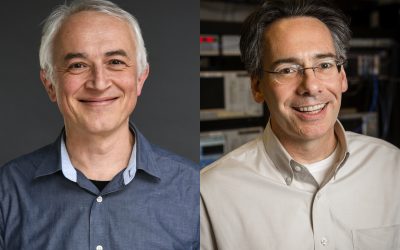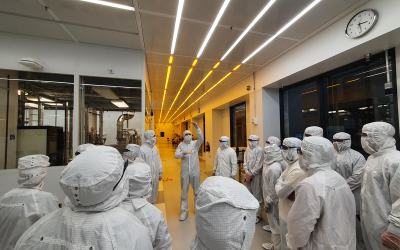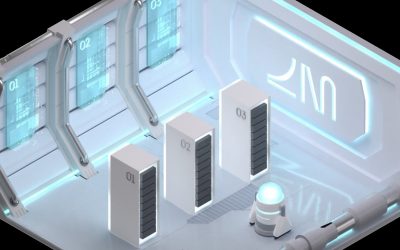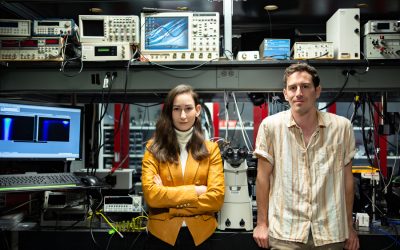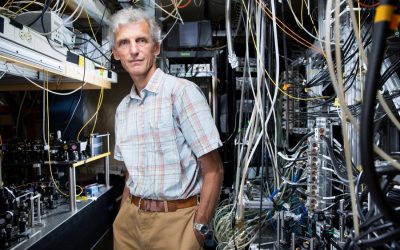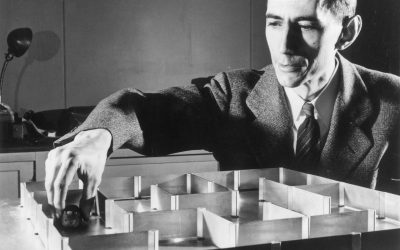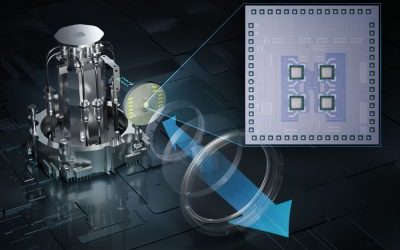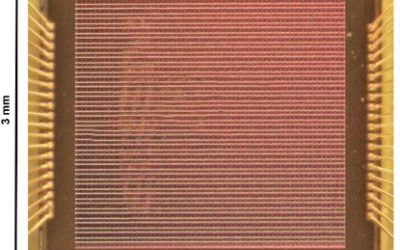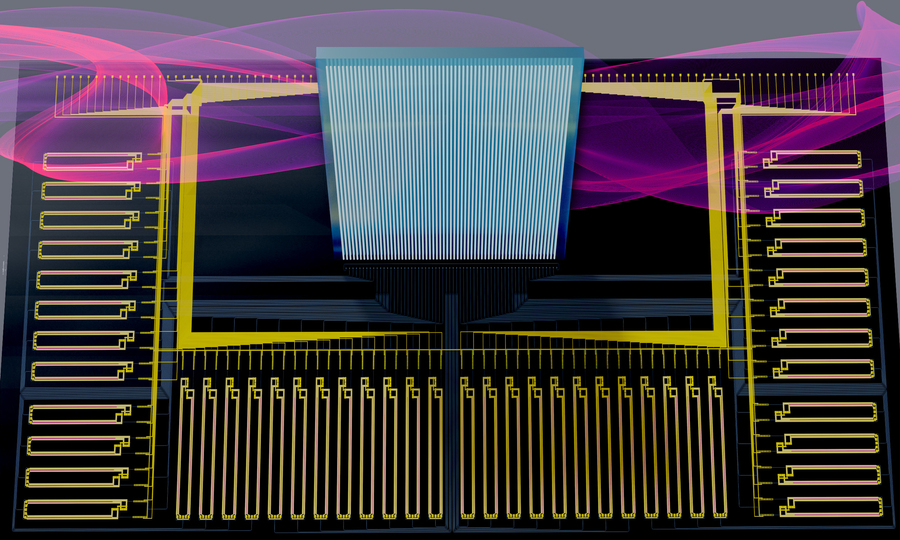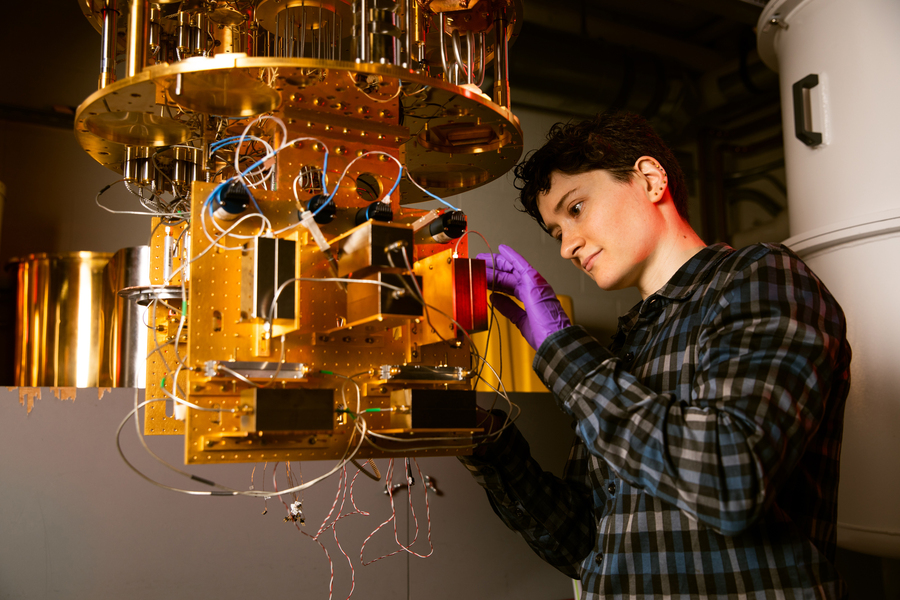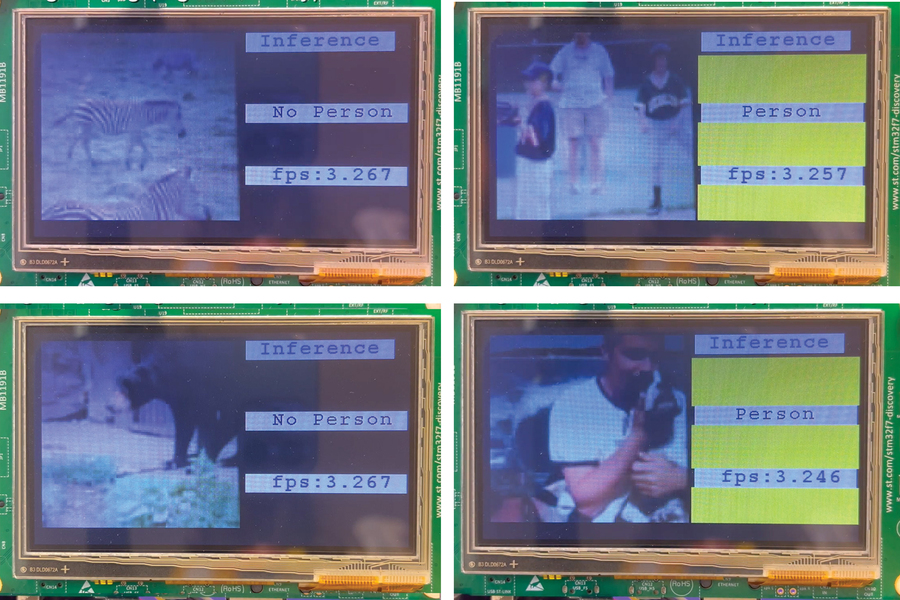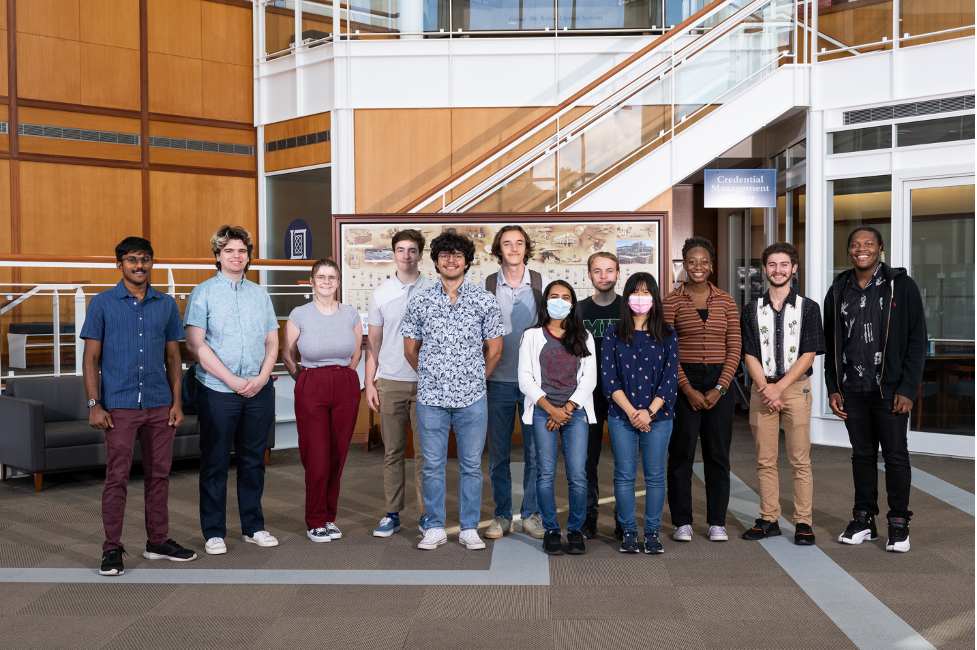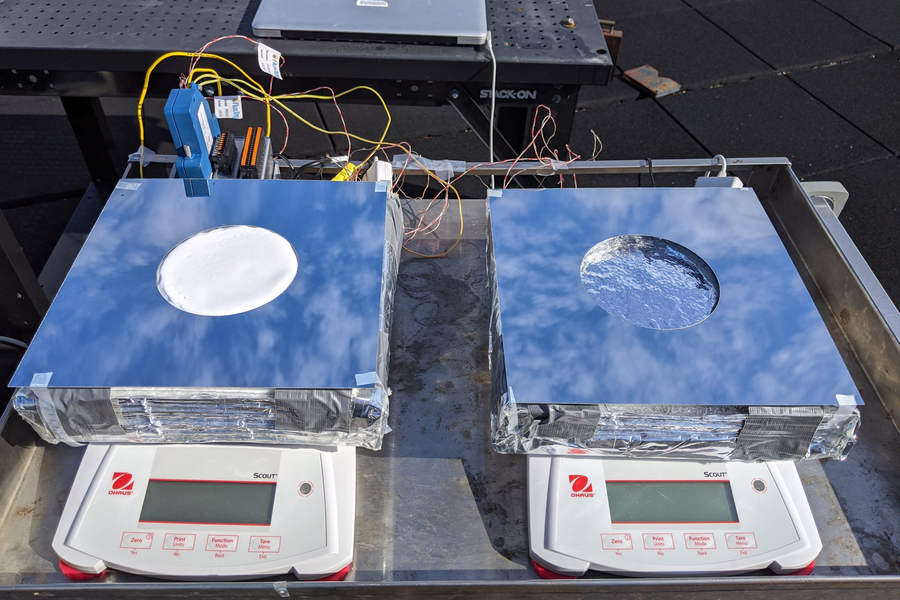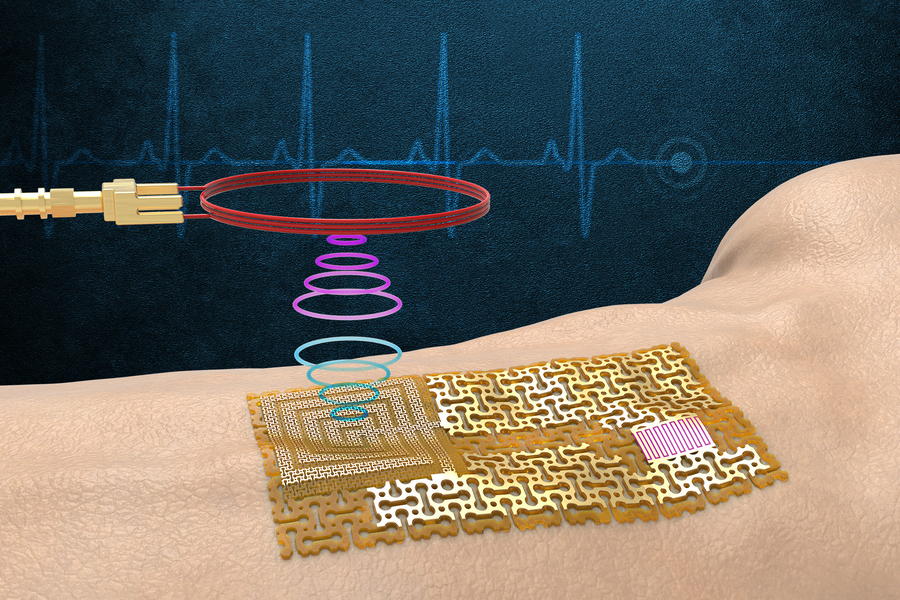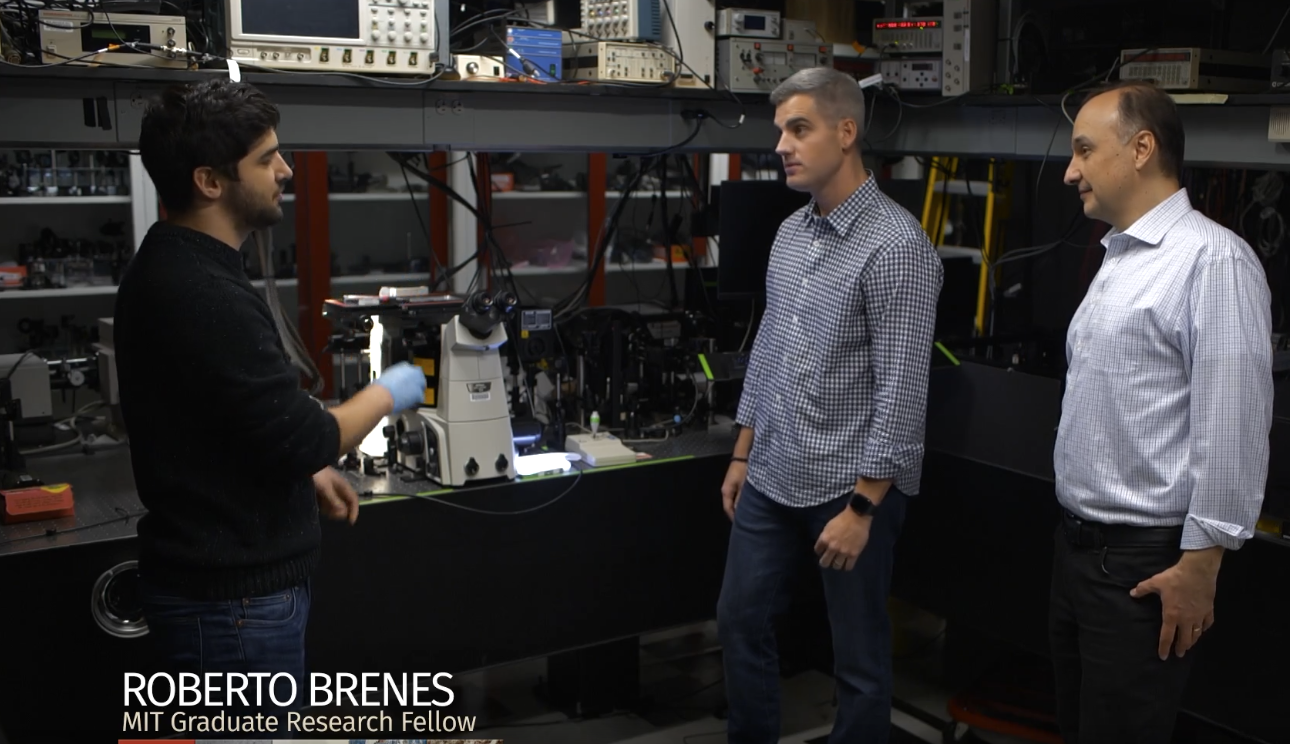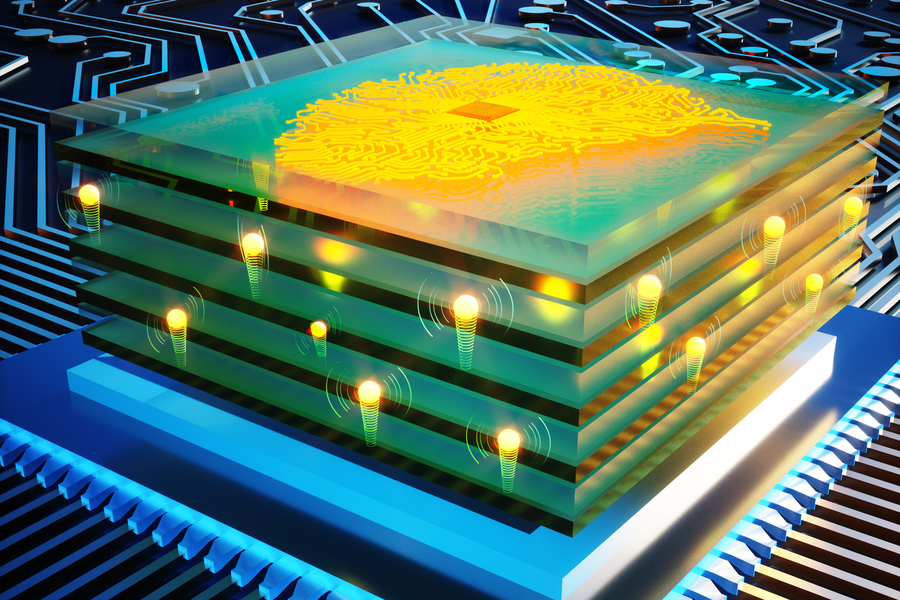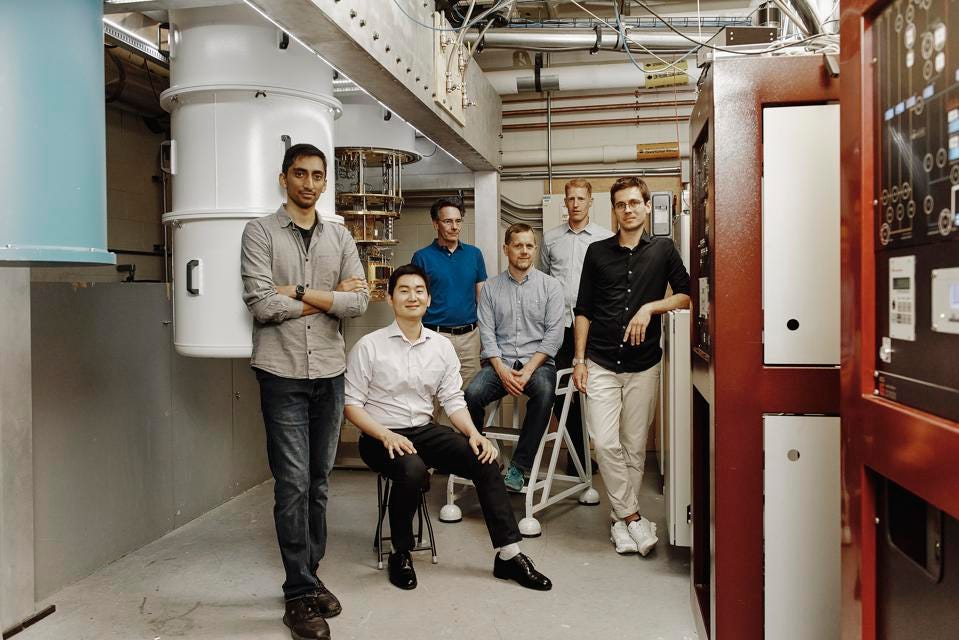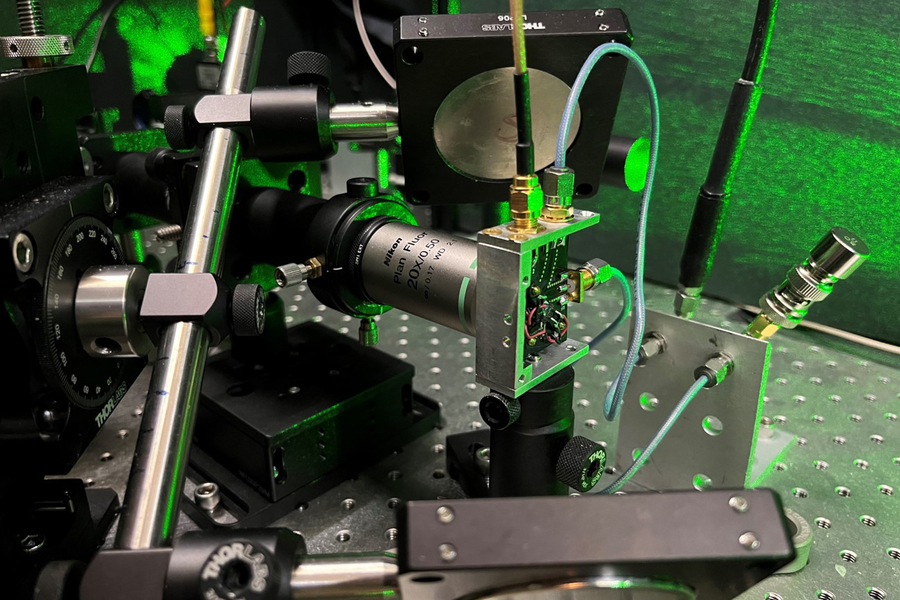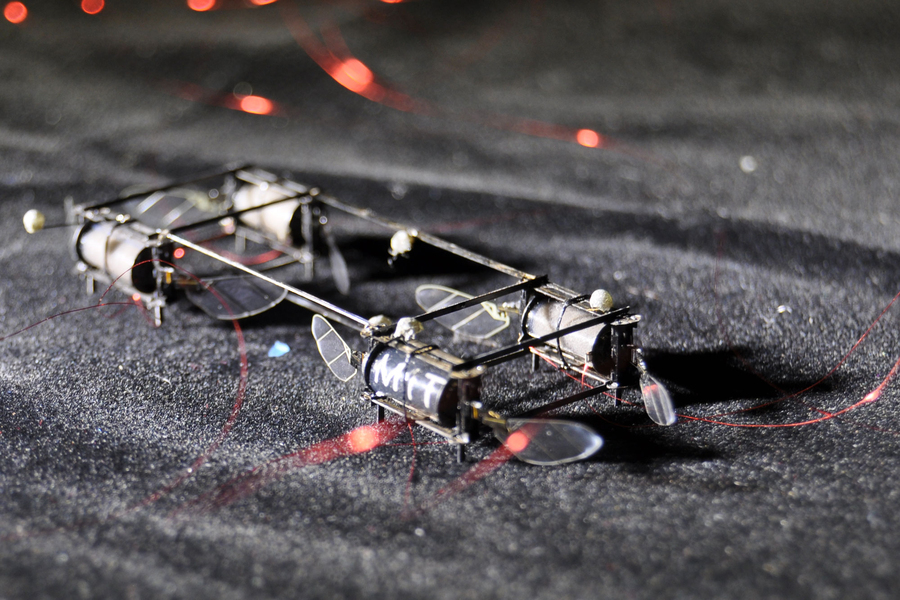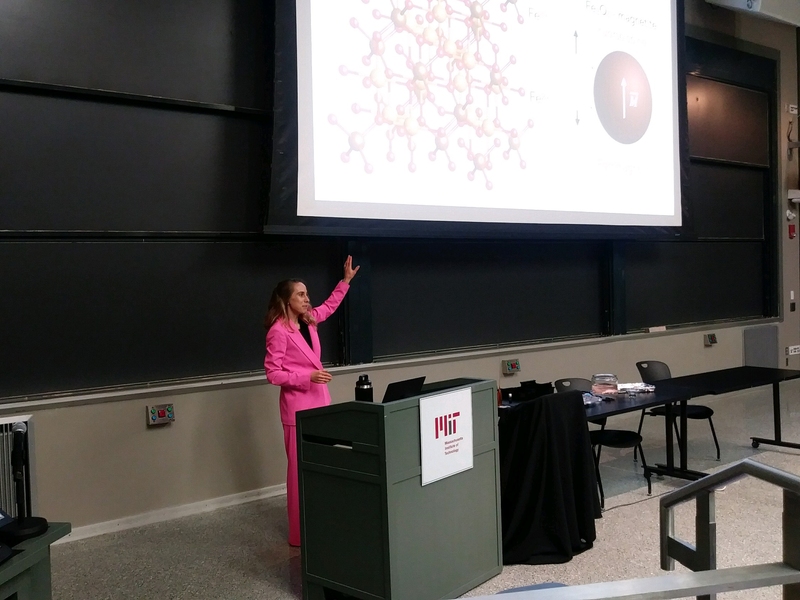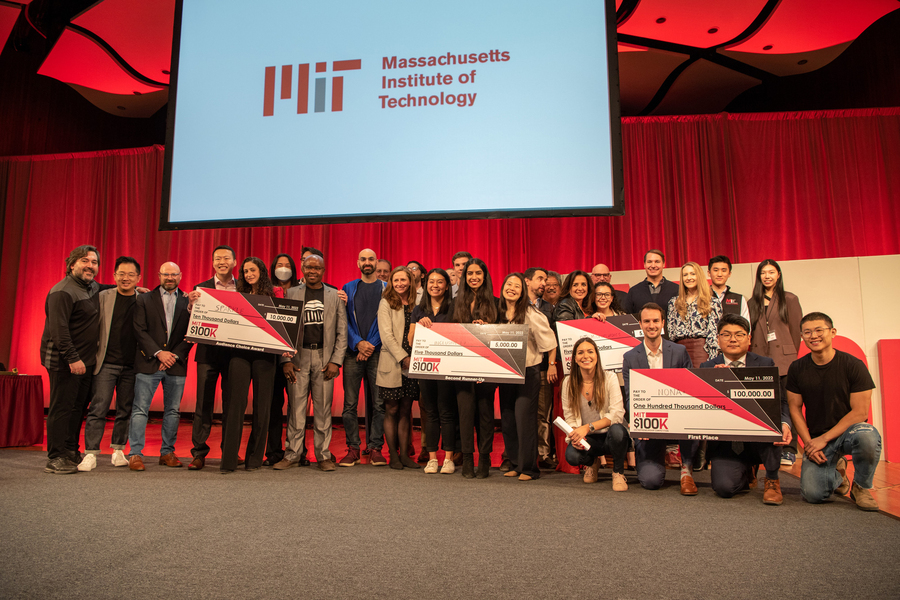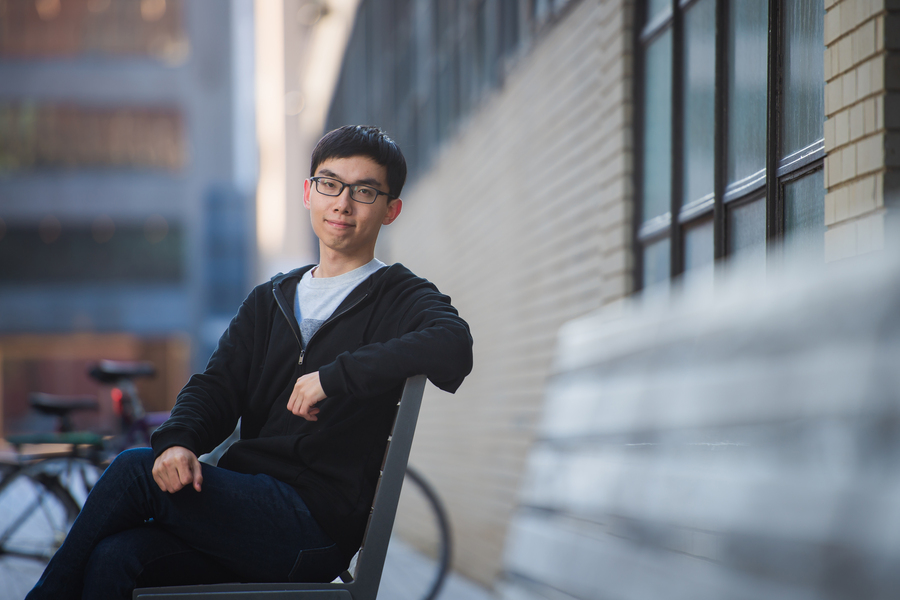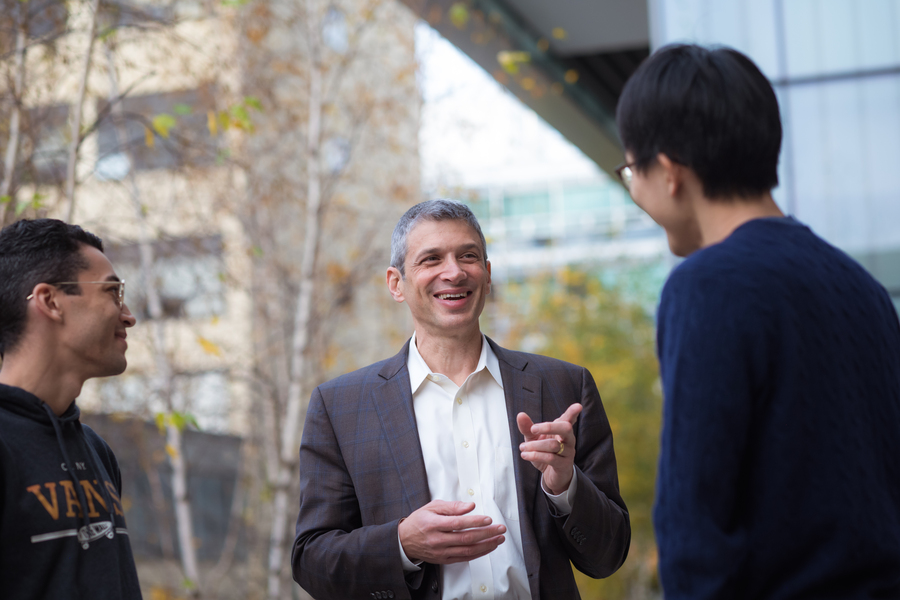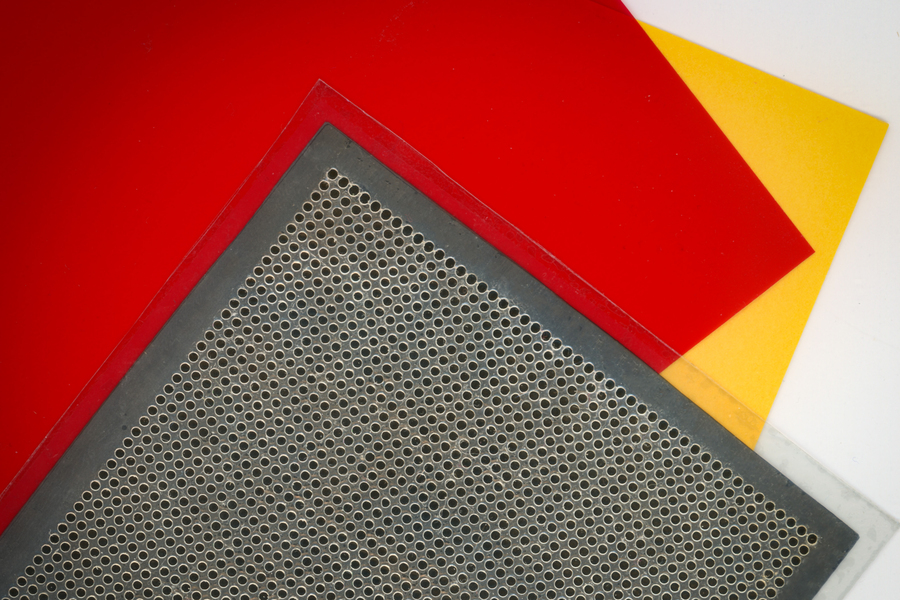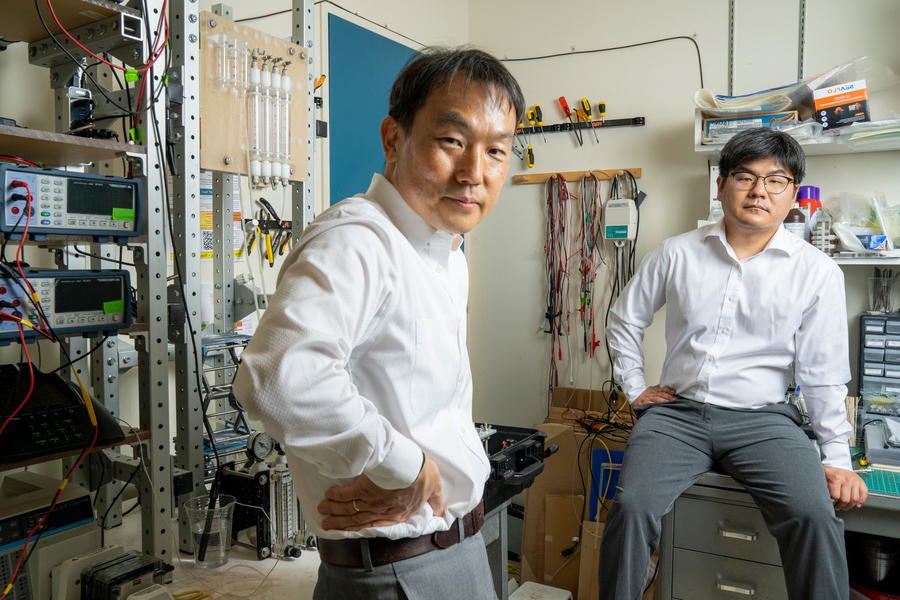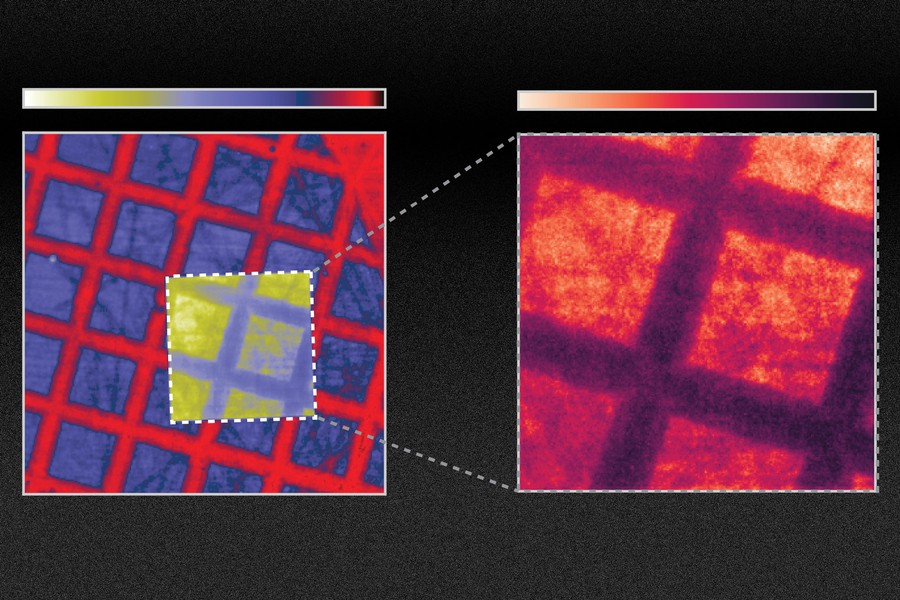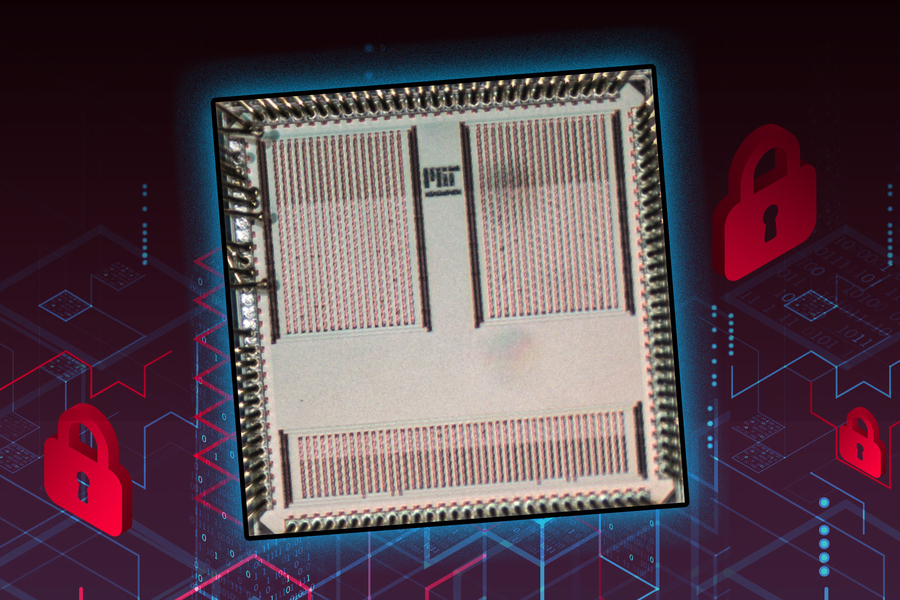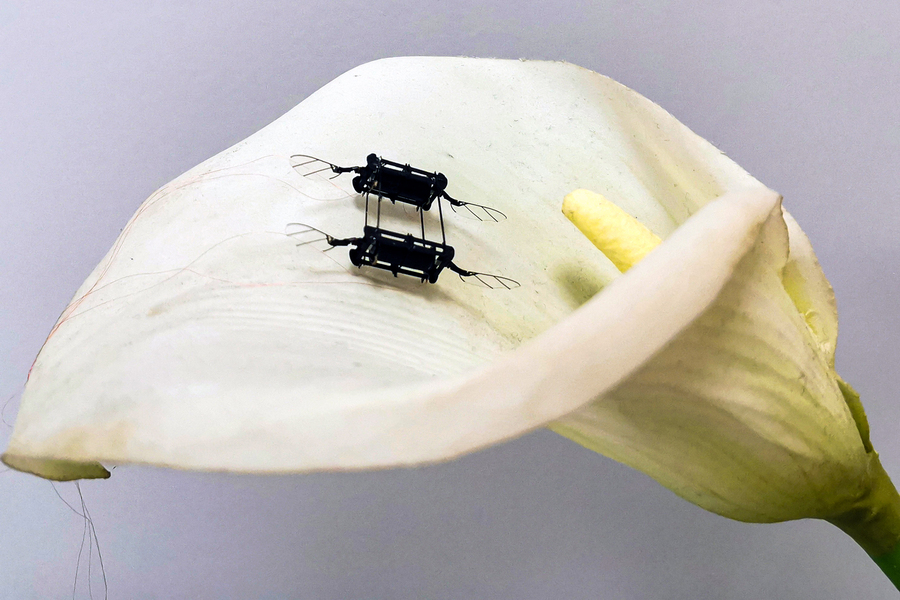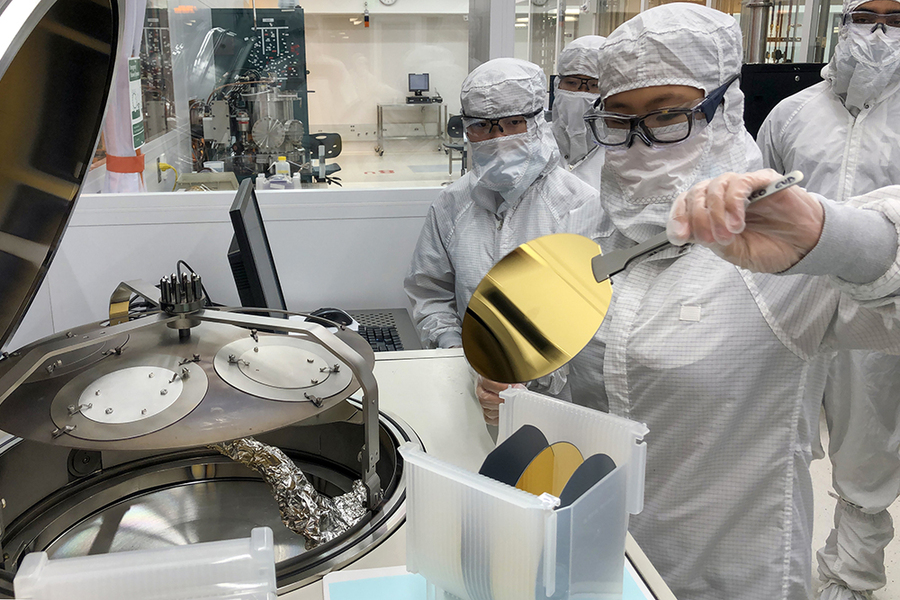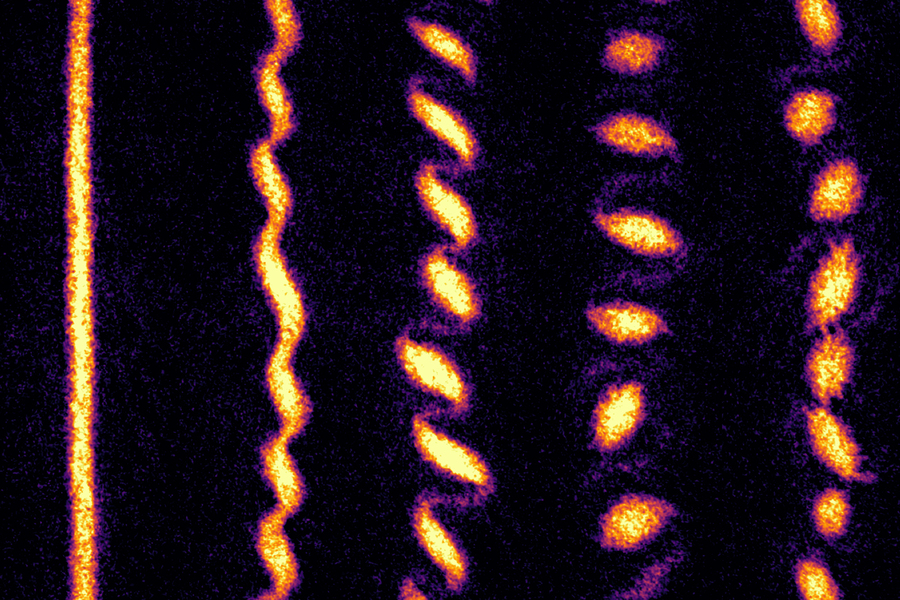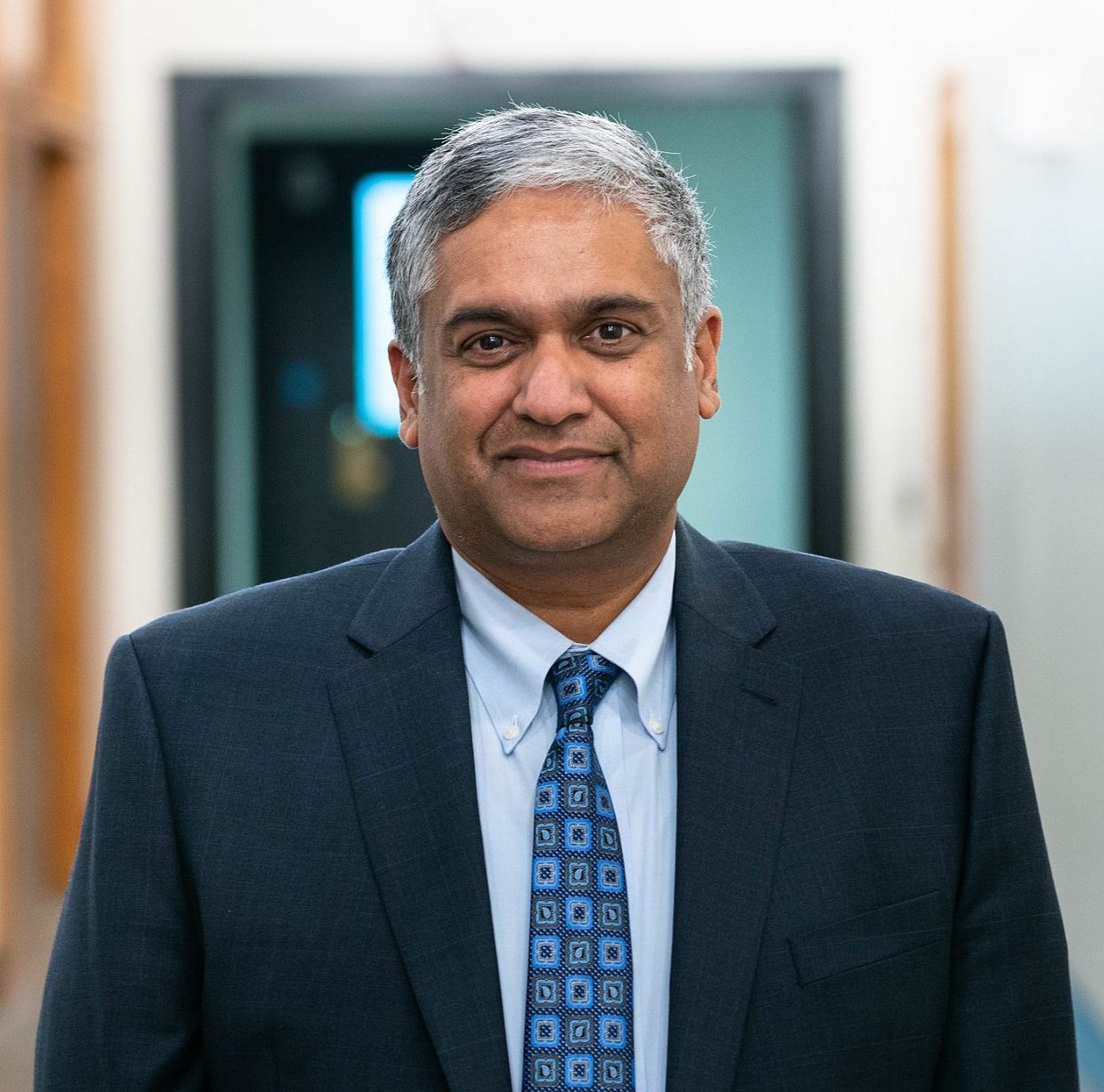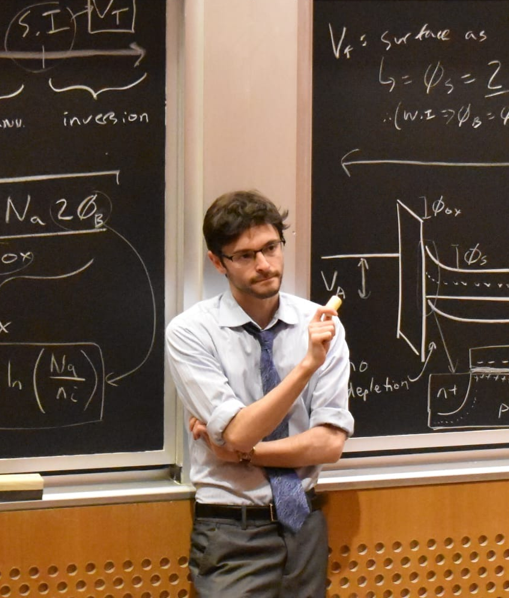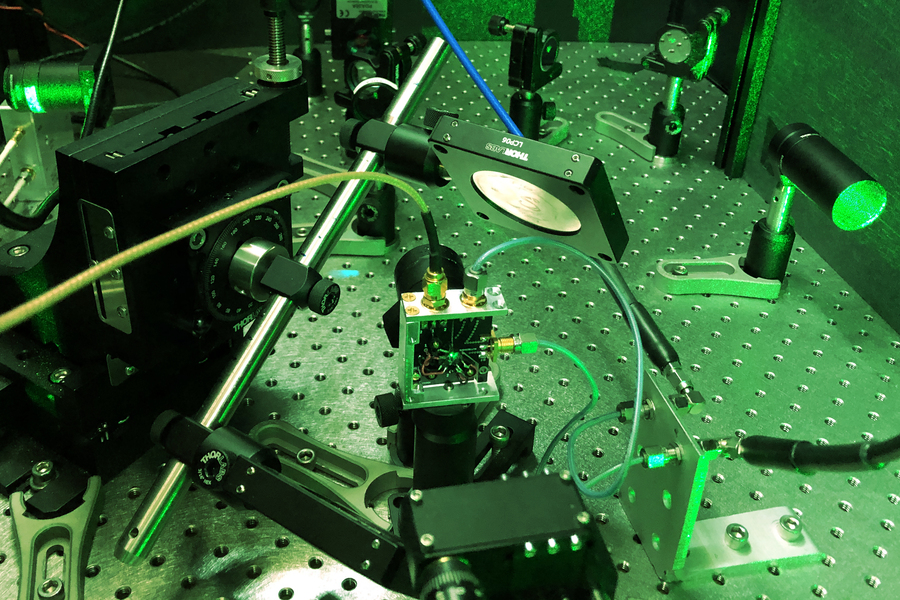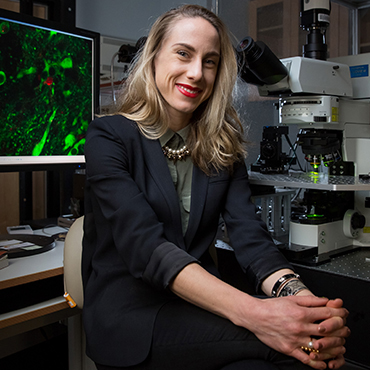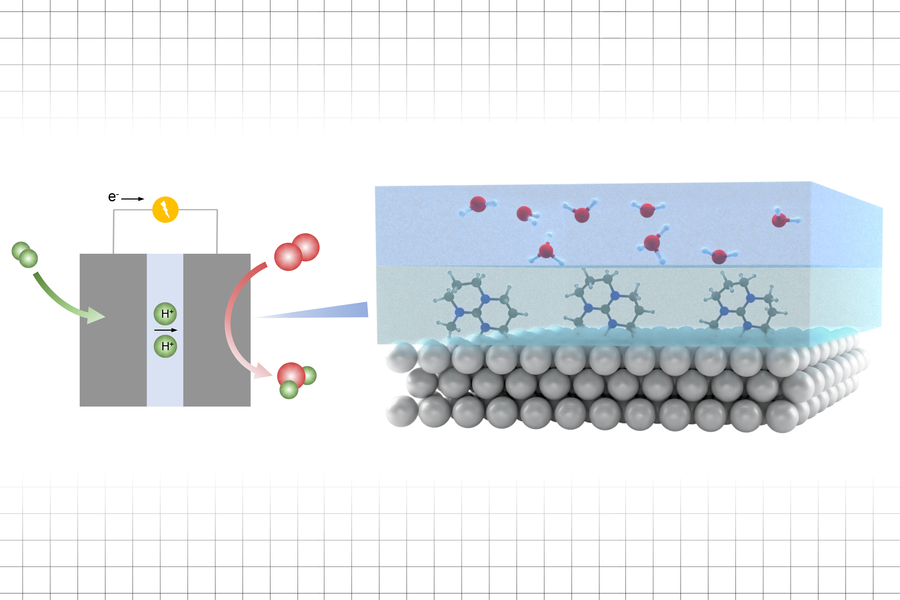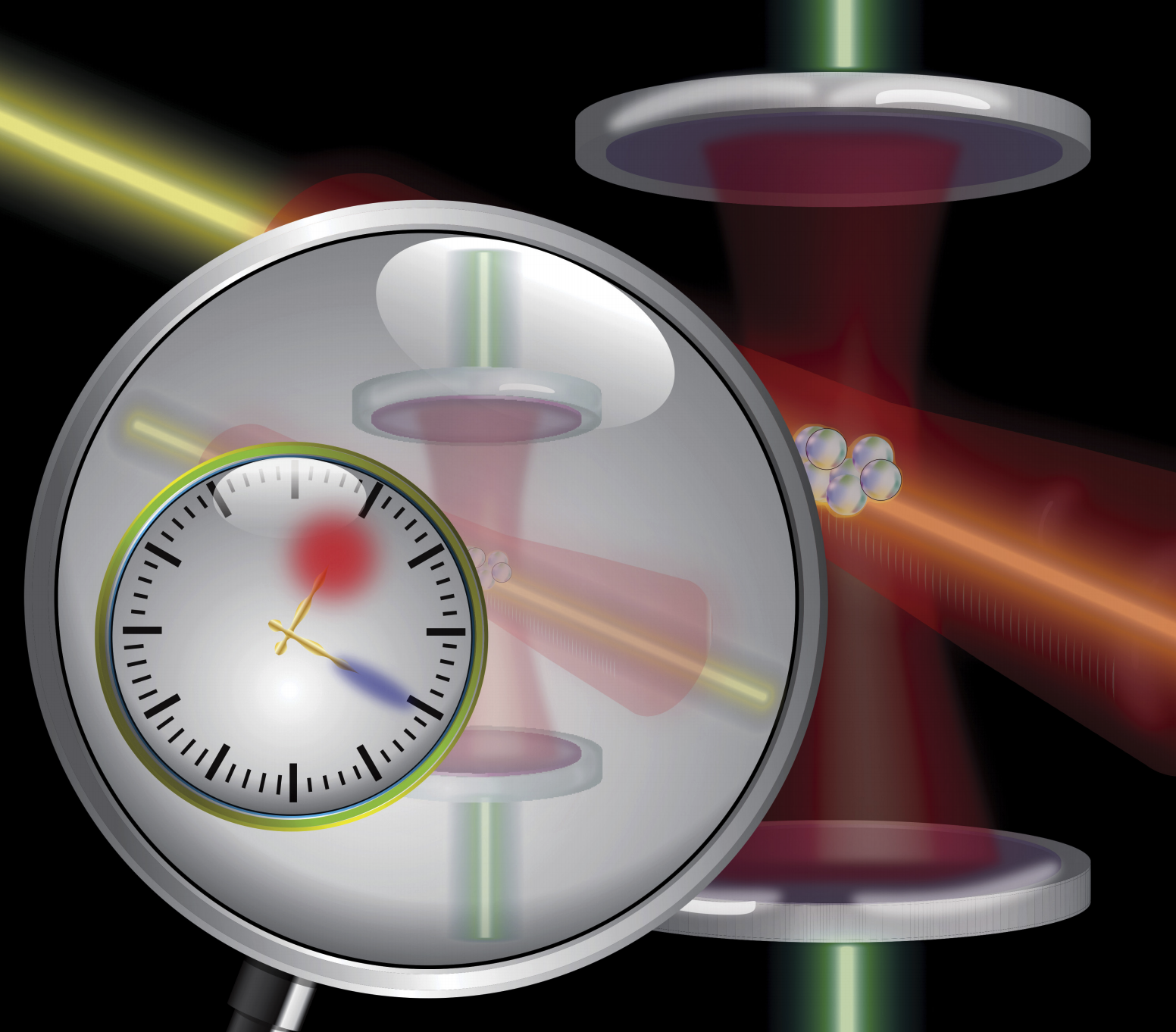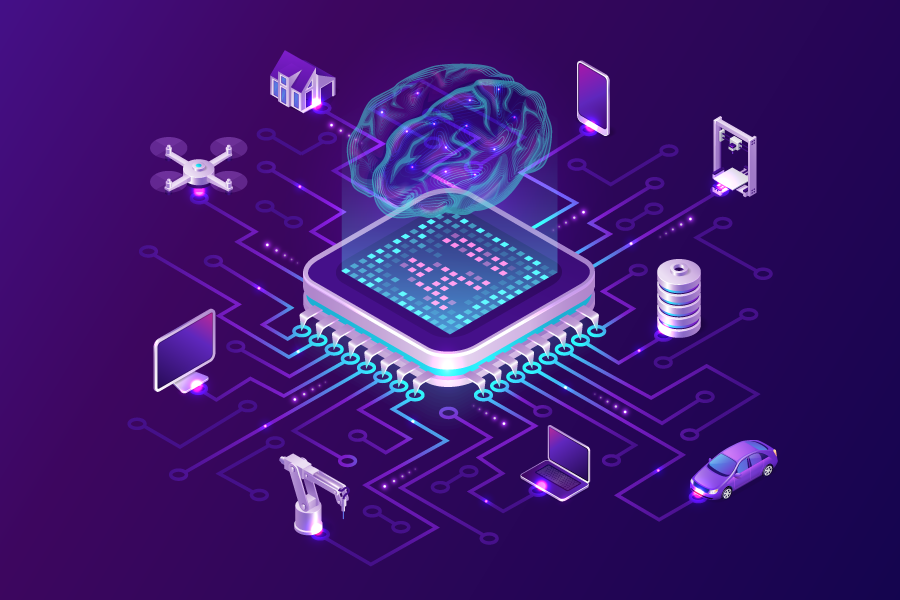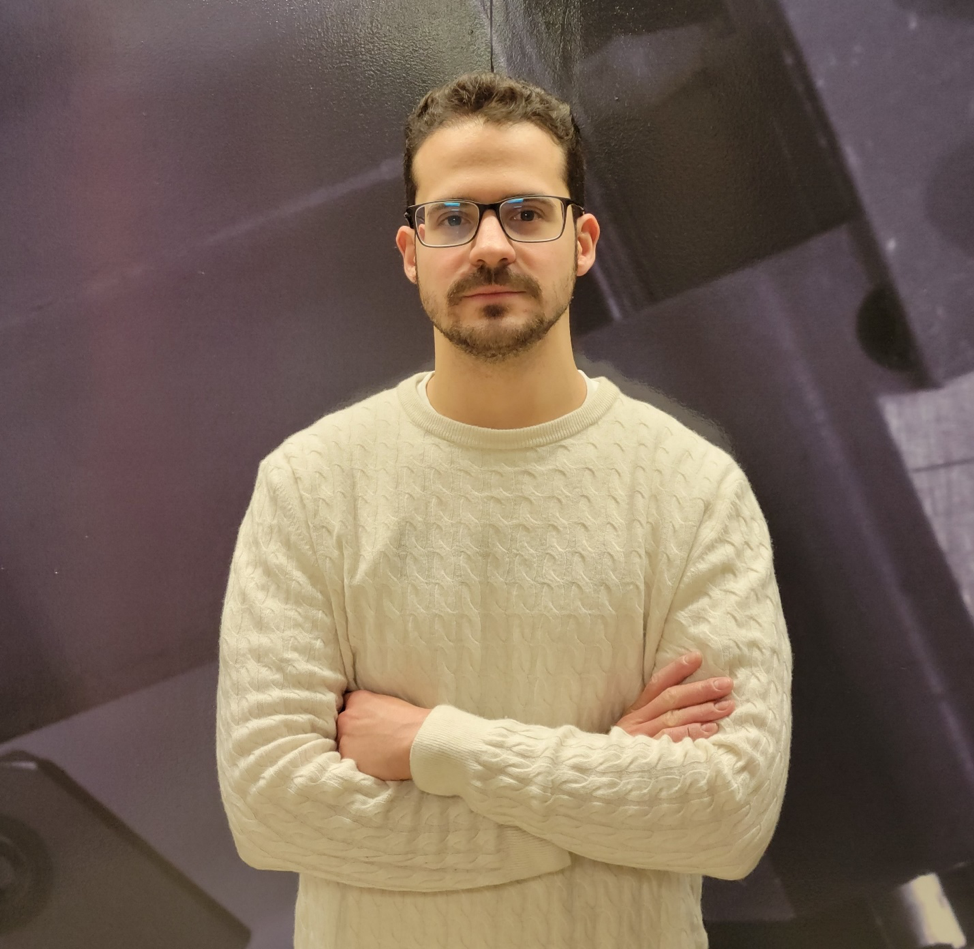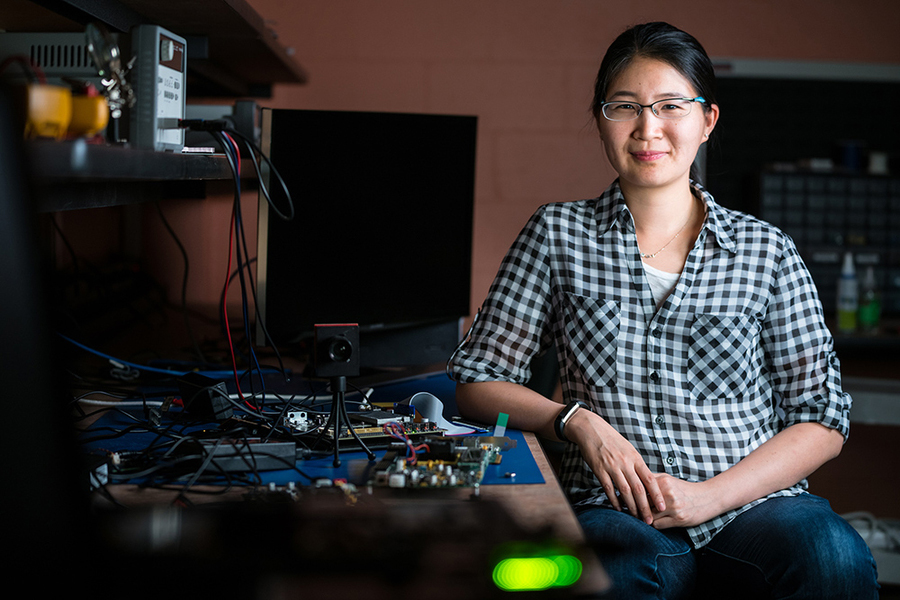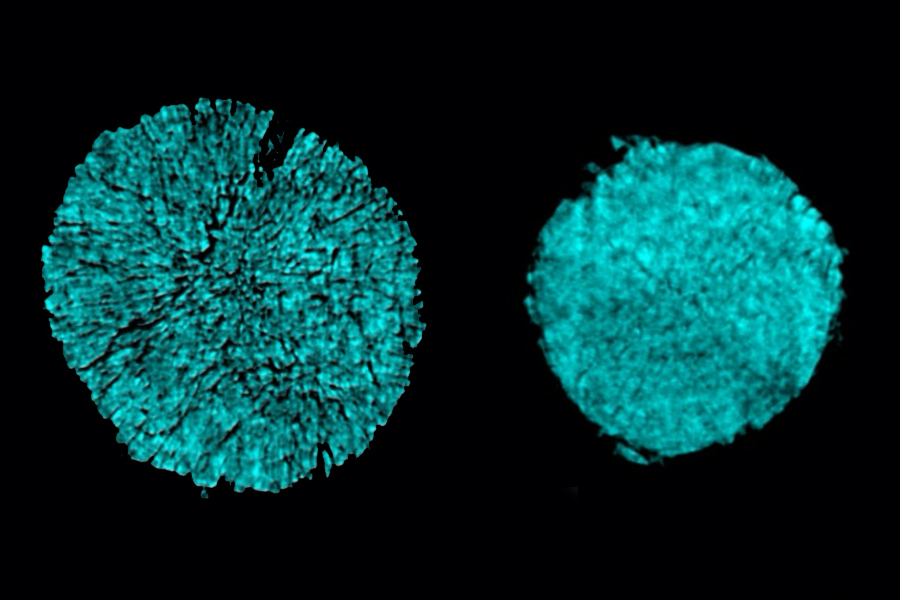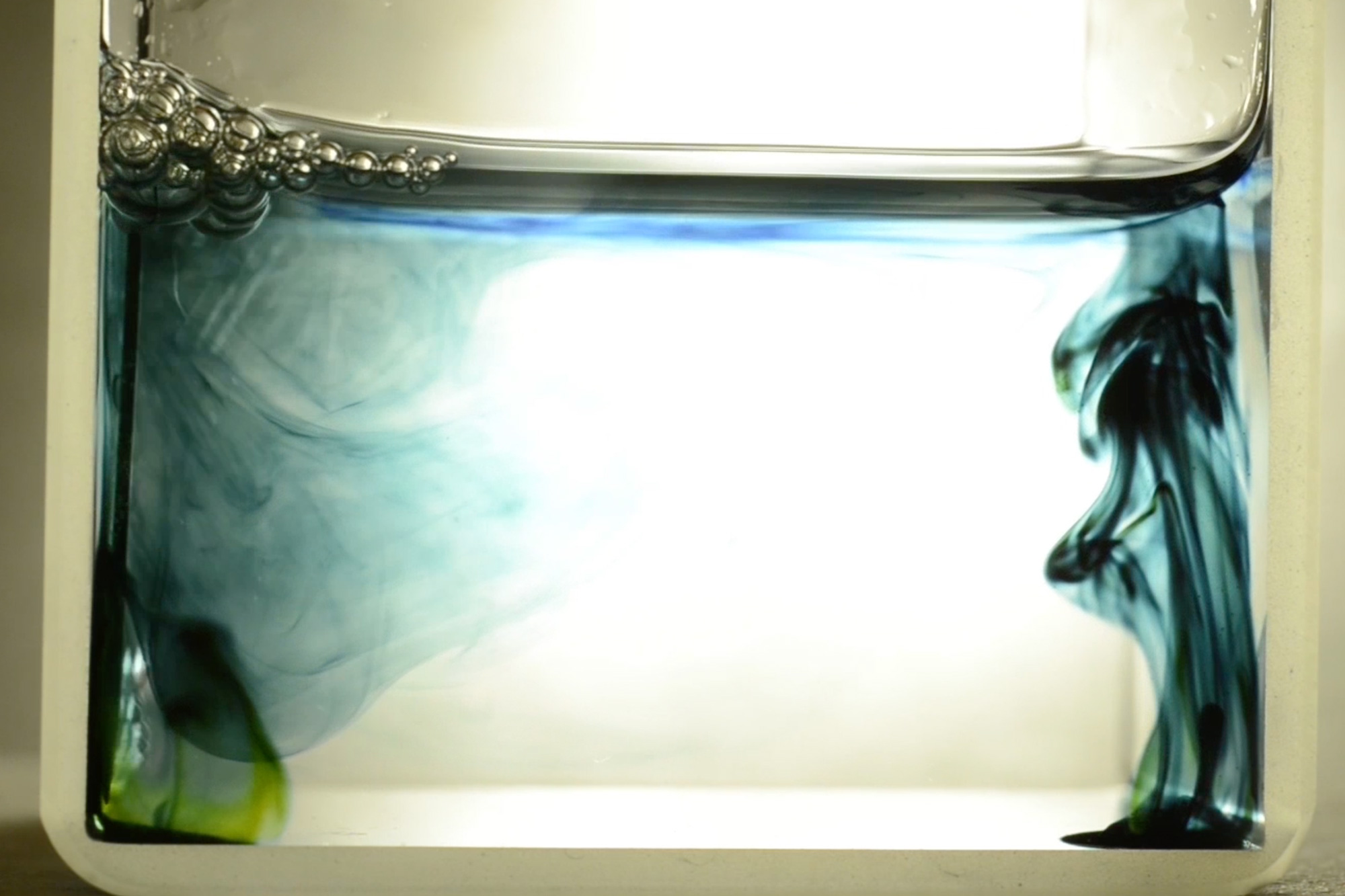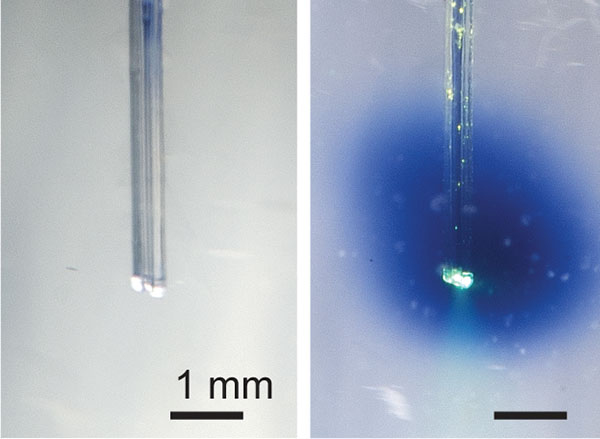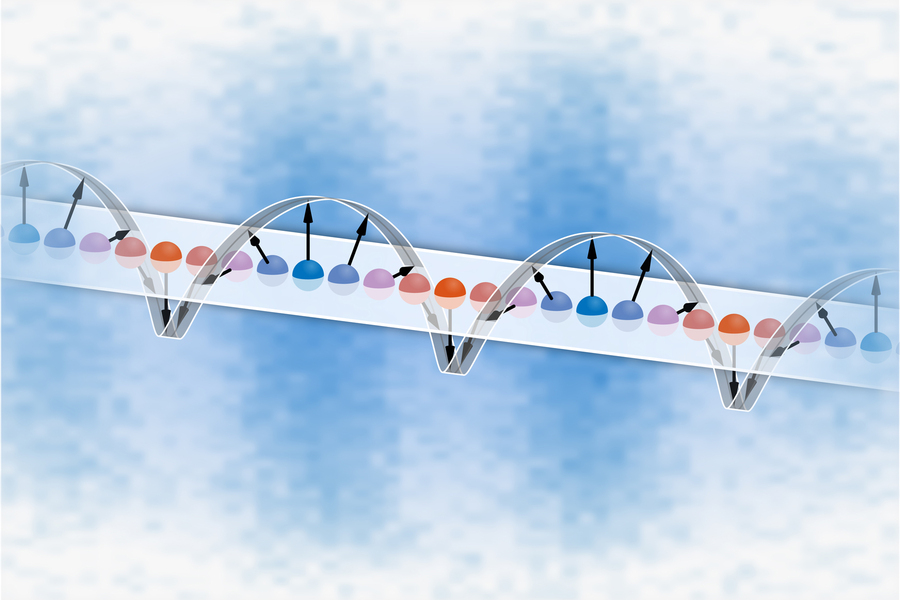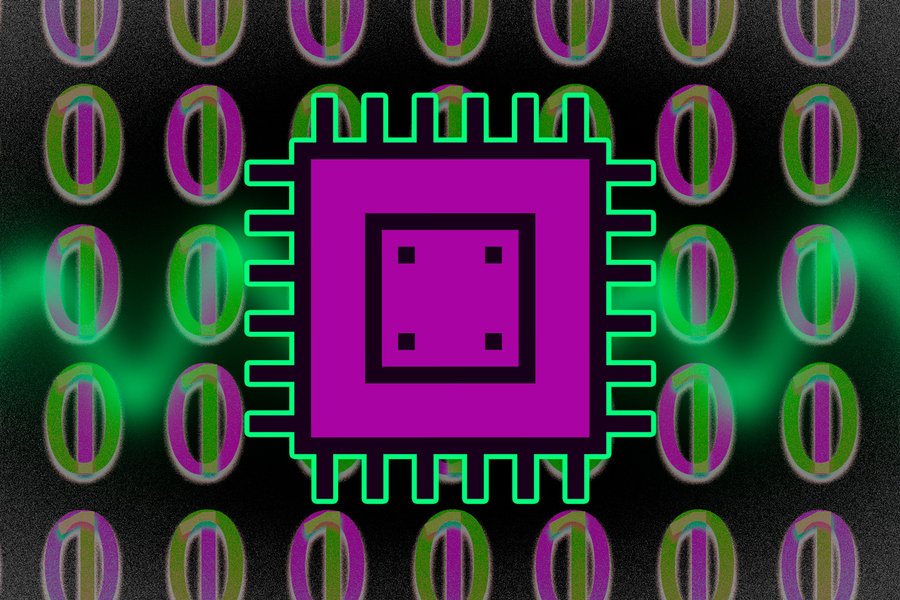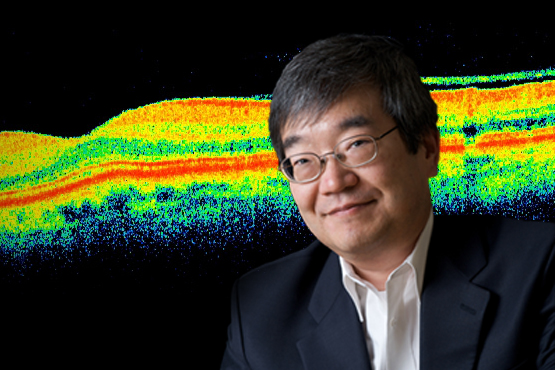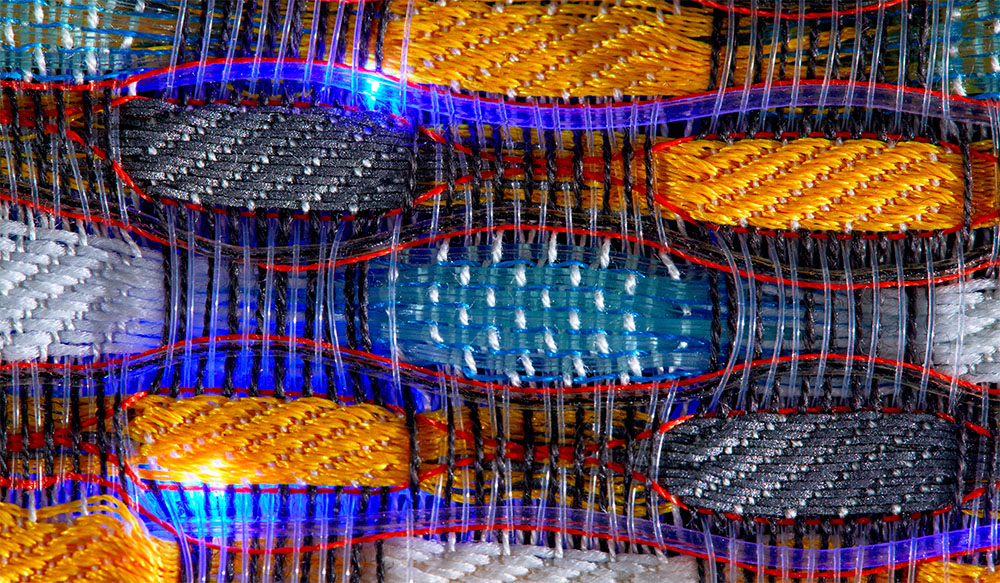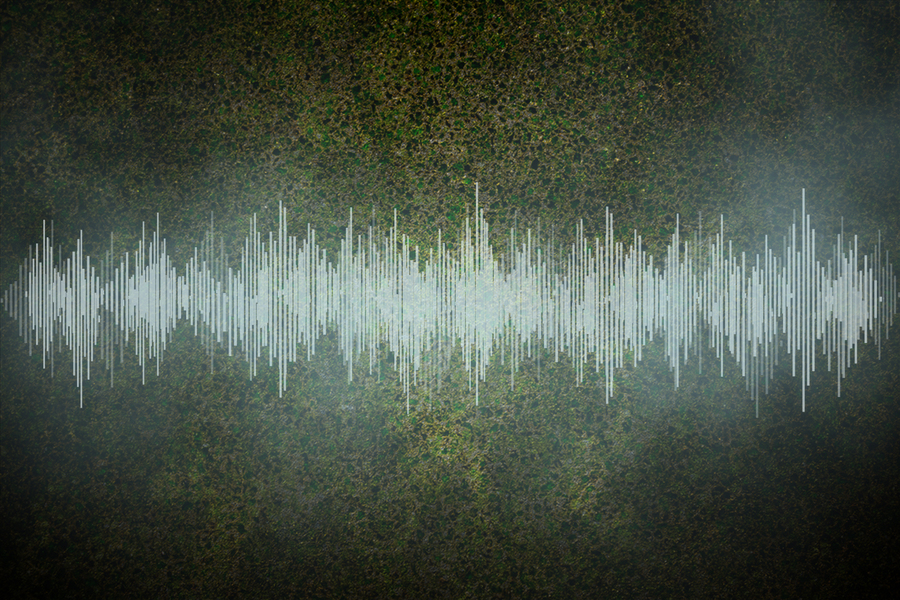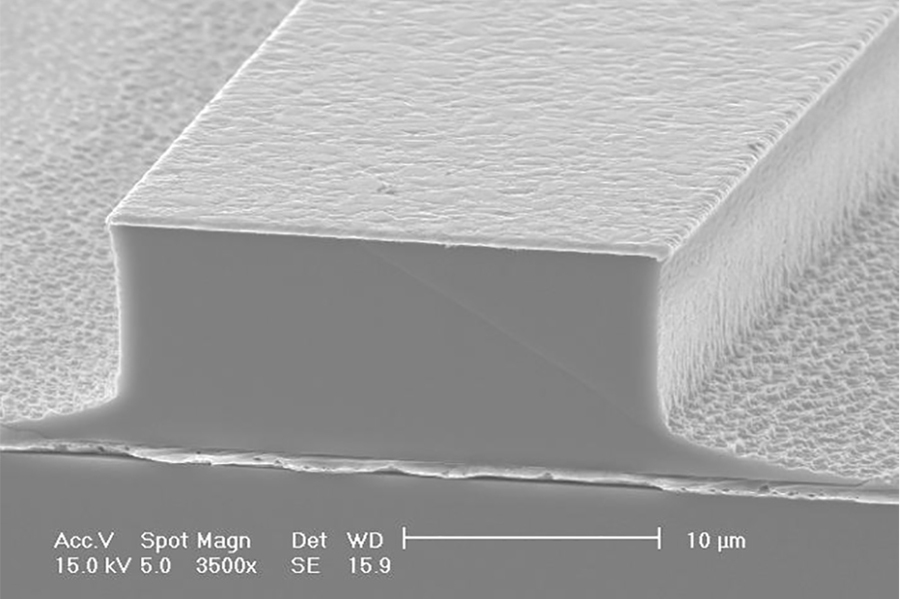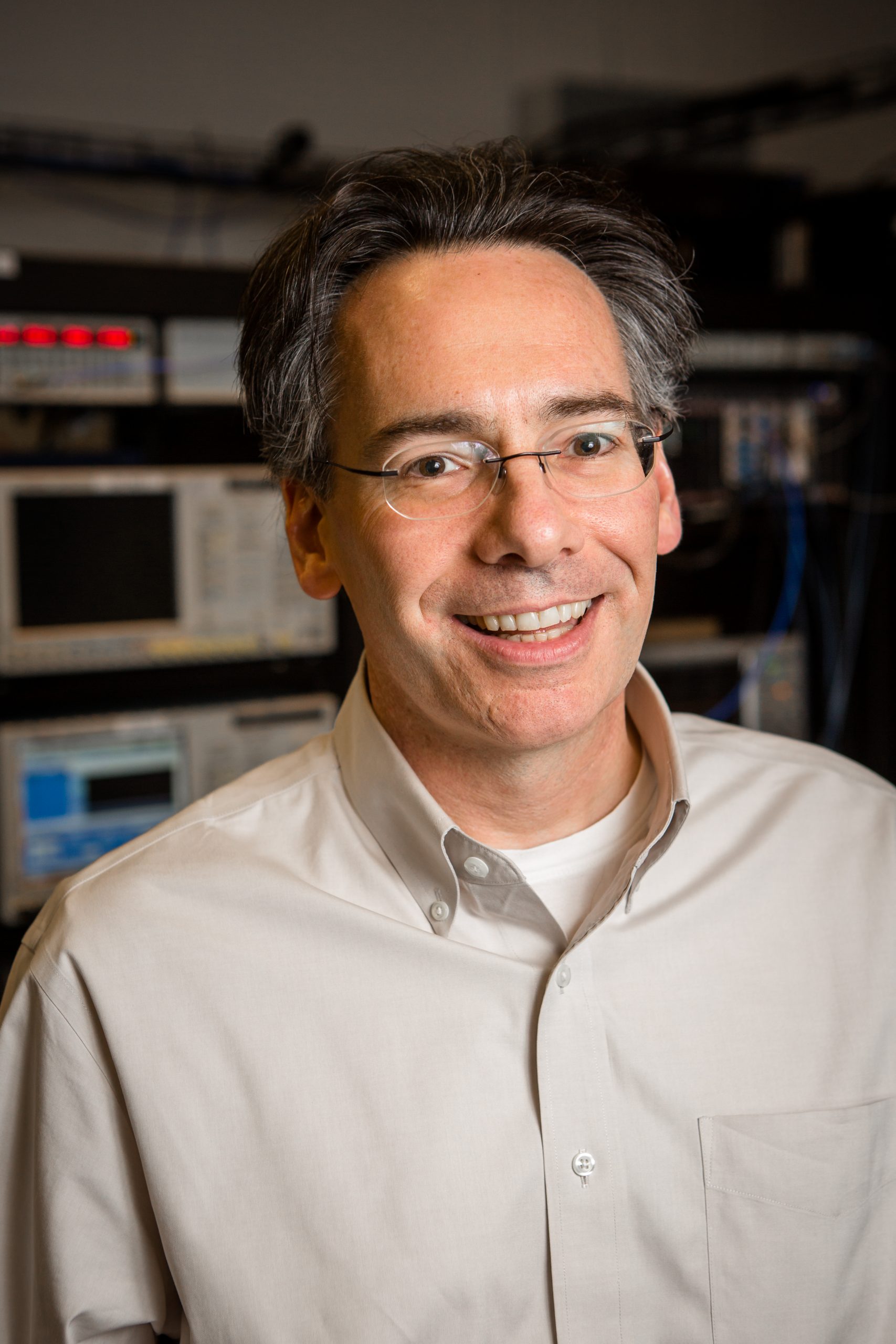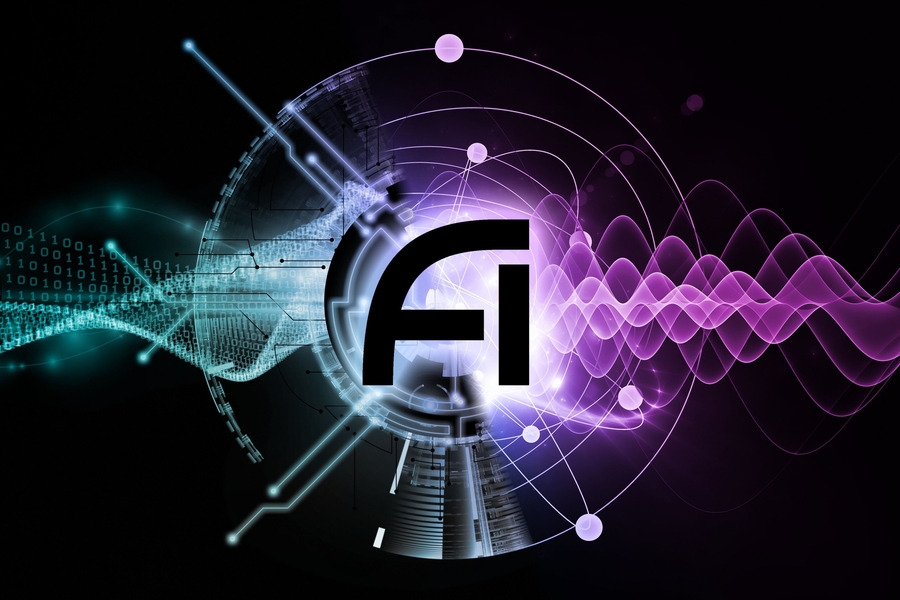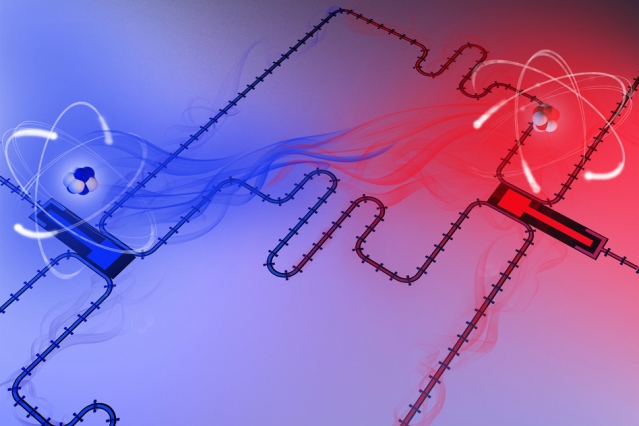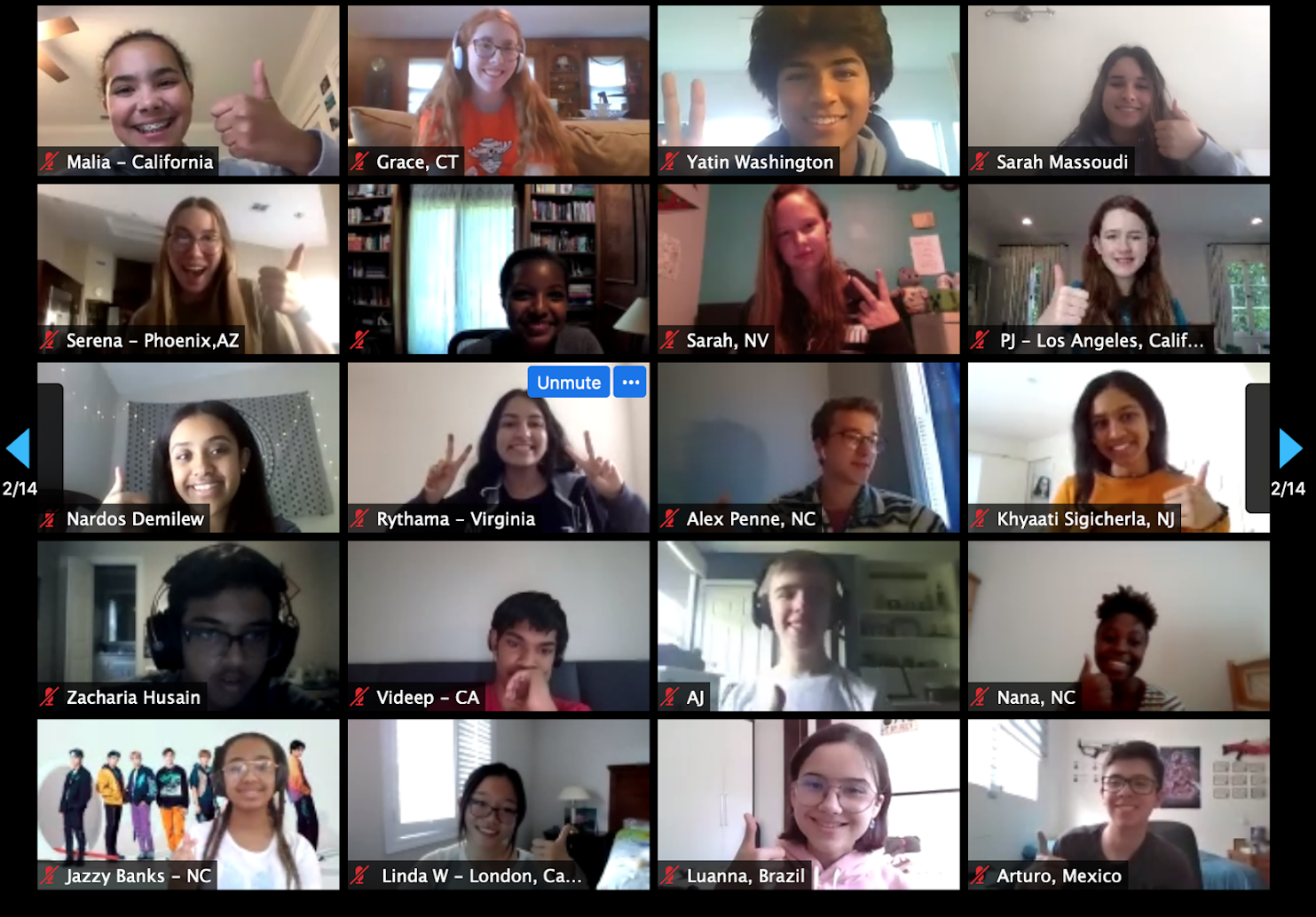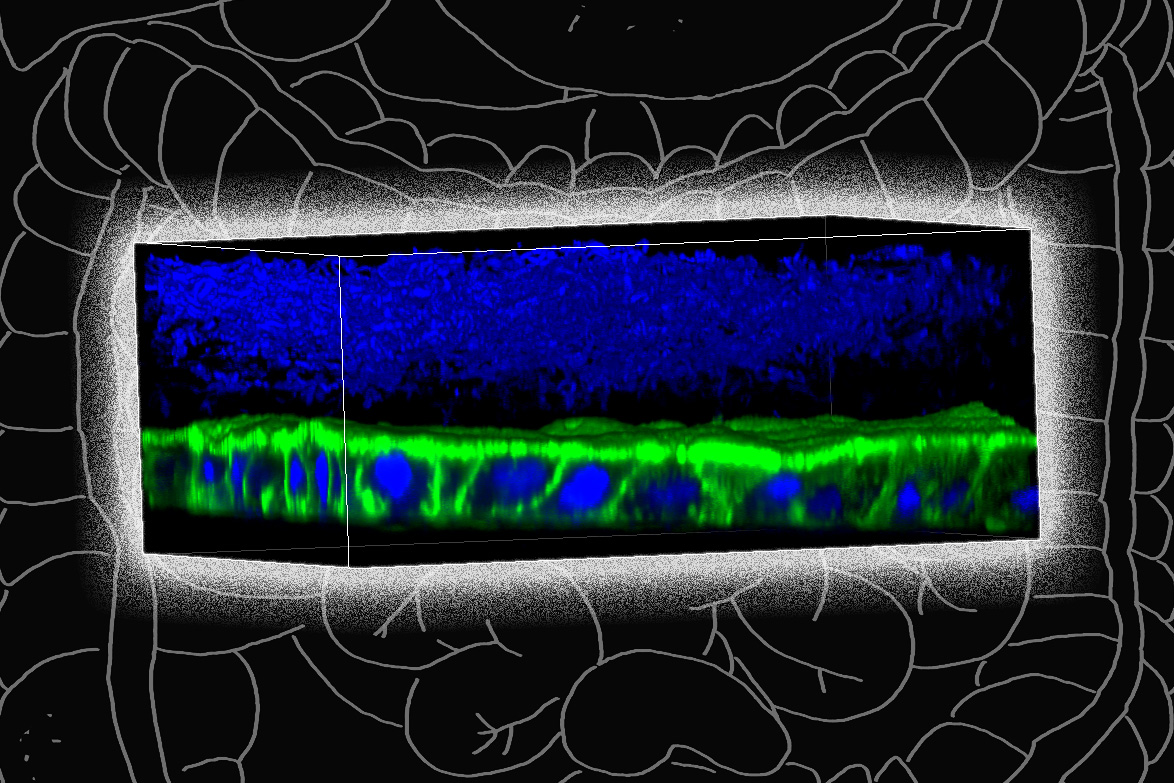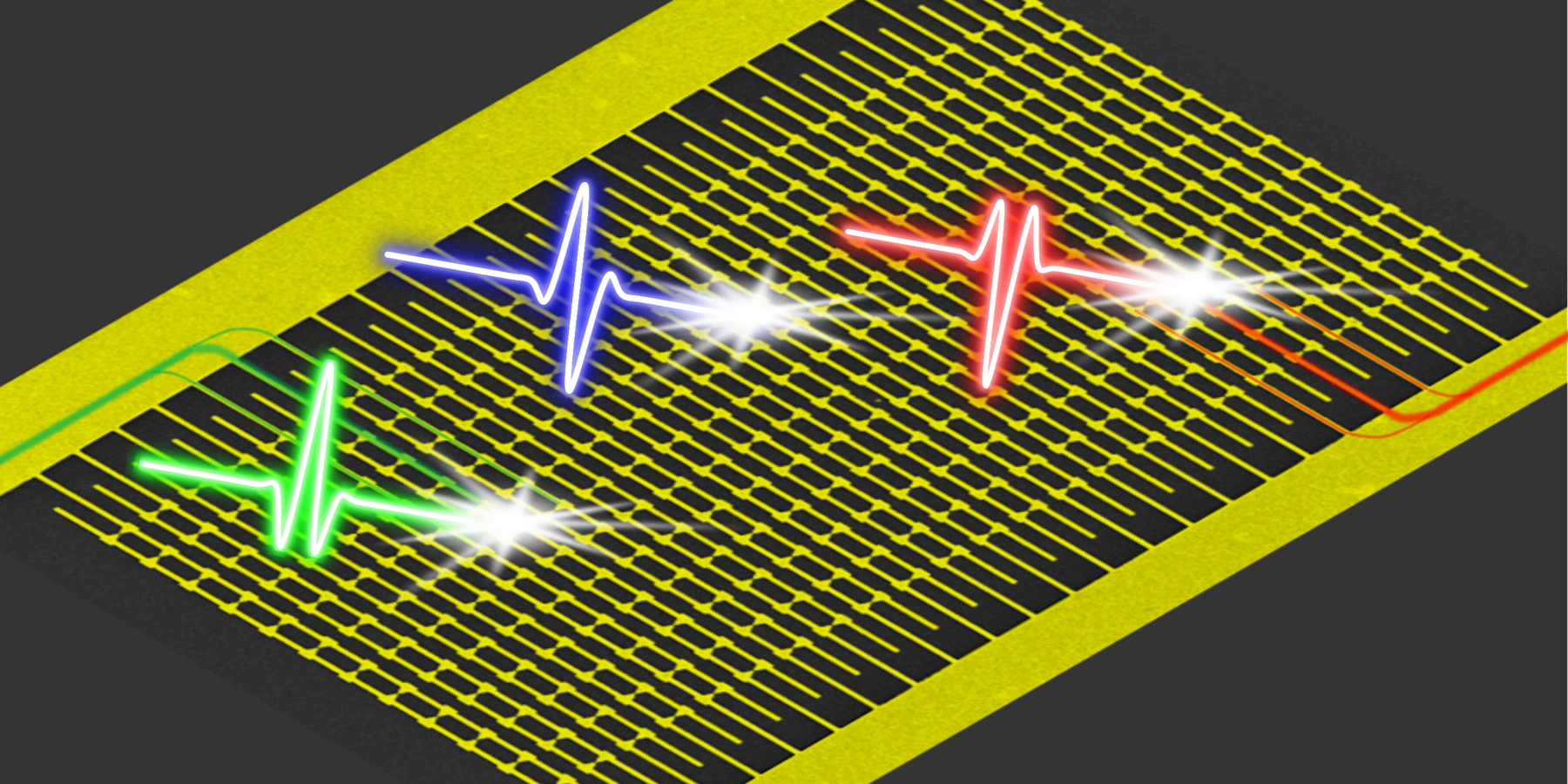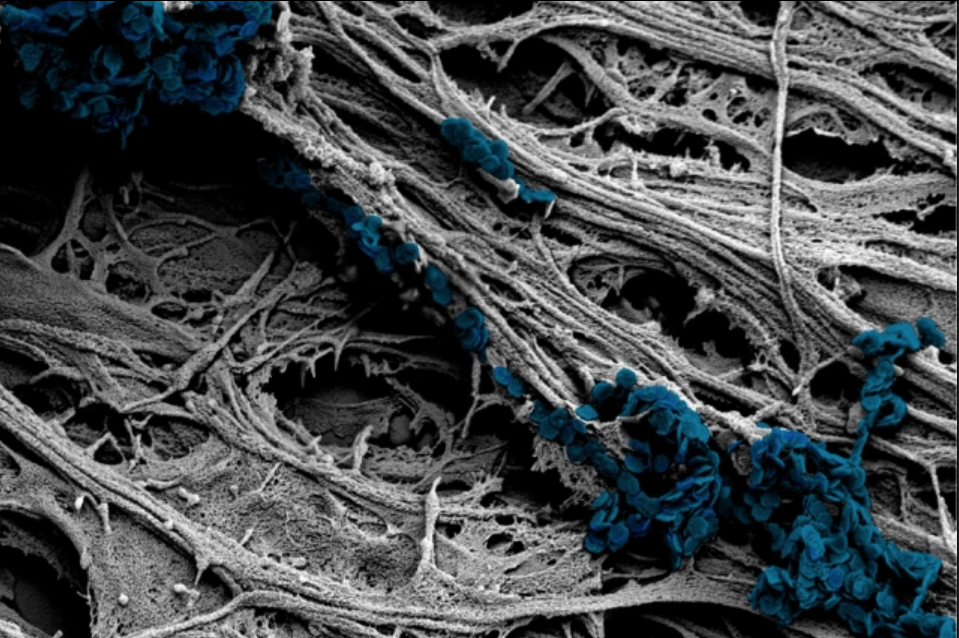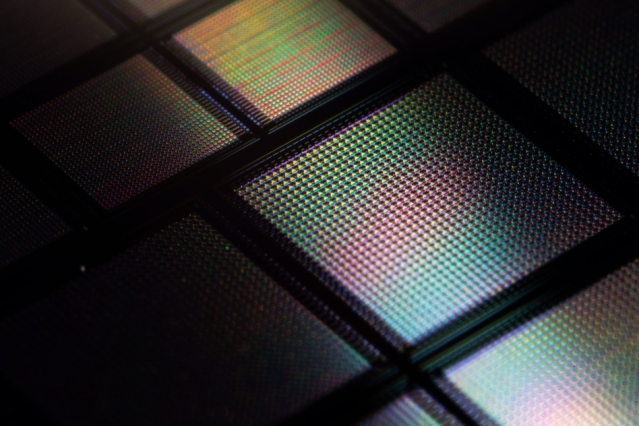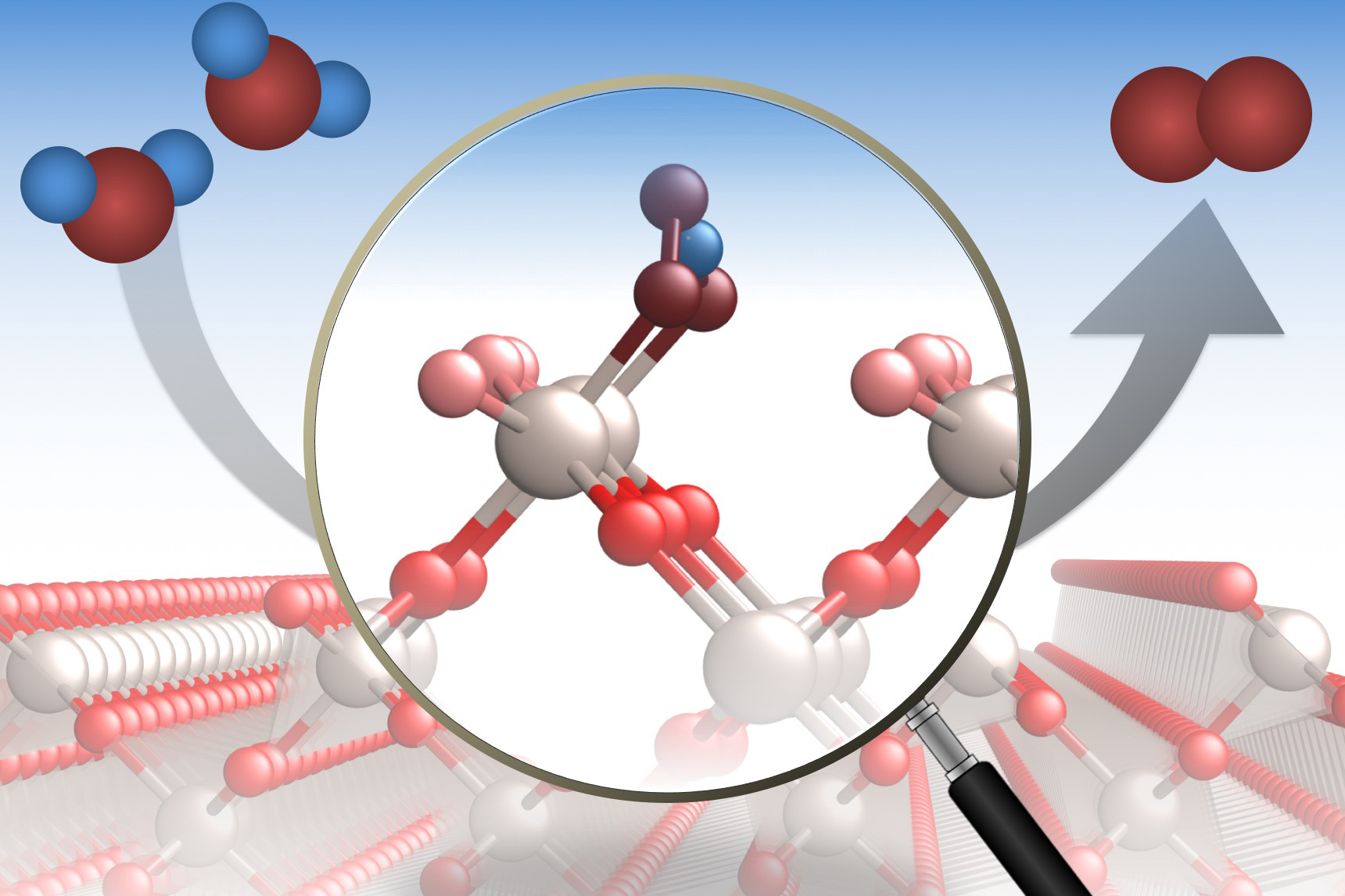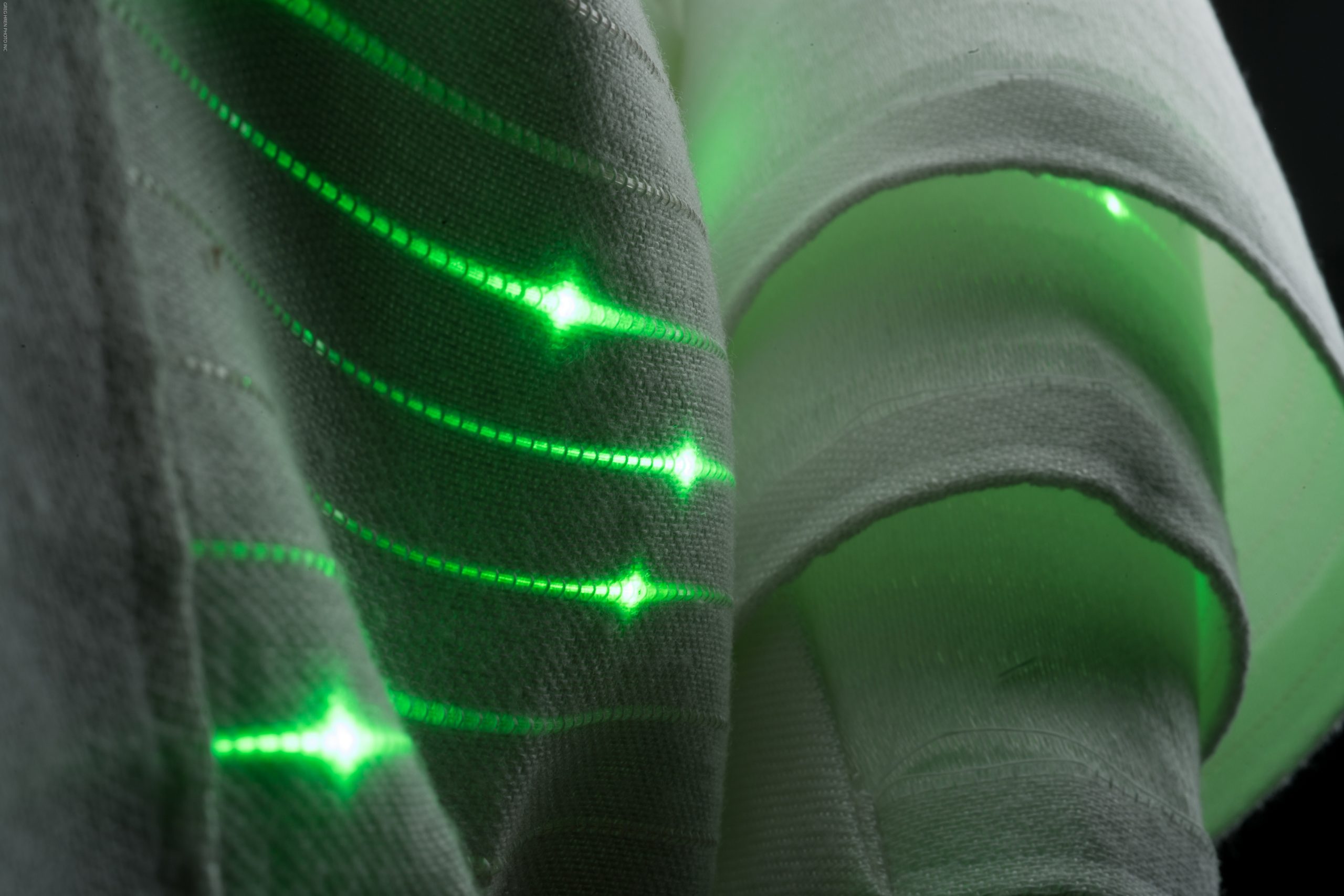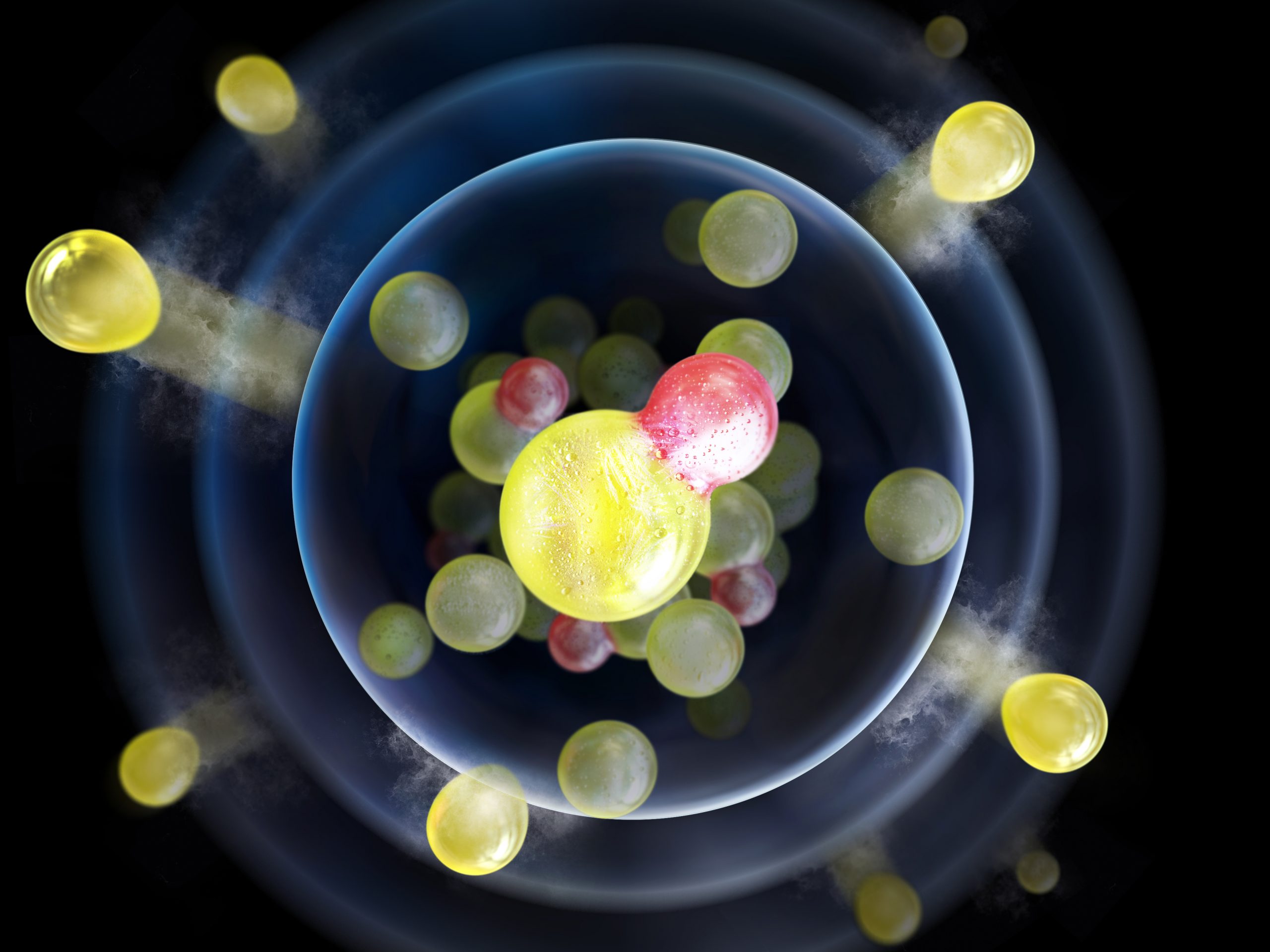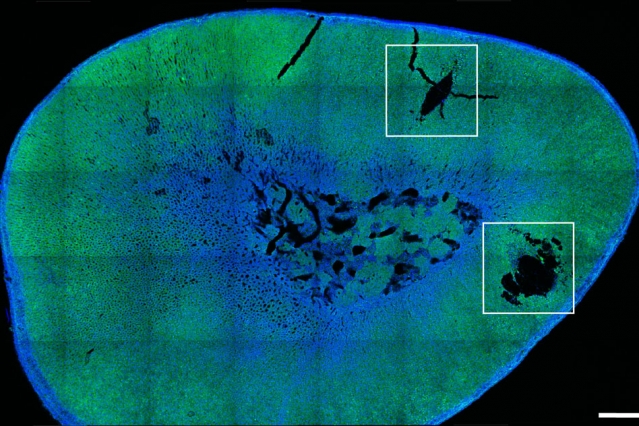RLE News
Professors Vladan Vuletić and William Oliver named 2023 AAAS Fellows
Four MIT faculty members have been elected as fellows of the American Association for the Advancement of Science (AAAS). (MIT News) Related Links: AAAS Fellows Experimental Atomic Physics Group Engineering Quantum Systems Group
VIAVI Solutions joins MIT.nano Consortium
VIAVI Solutions joins MIT.nano Consortium International technology company becomes sustaining member of industry group. VIAVI Solutions, a global provider of communications test and measurement and optical technologies, has joined the MIT.nano Consortium. With roots…
Lightmatter, founded by three MIT alumni, is using photonic technologies to reinvent how chips communicate and calculate
Startup accelerates progress toward light-speed computing (MIT News) MIT $100K Entrepreneurship Competition Lightmatter
Study unlocks nanoscale secrets for designing next-generation solar cells
Study unlocks nanoscale secrets for designing next-generation solar cells (MIT News) Related Links: Dane deQuilettes Vladimir Bulovic Moungi Bawendi Department of Chemistry Research Laboratory of Electronics Department of Electrical Engineering and Computer Science…
Center for Ultracold Atoms gets funding boost to “punch through tough scientific barriers and see what’s on the other side
Related Links: MIT professor of physics Wolfgang Ketterle, along with other members of the Center for Ultracold Atoms group, received a major renewal of its NSF Physics Frontiers Centers program grant to fund research that includes conducting experiments involving…
Li-Yu Yu and Ronald Davis named 2023 Claude E. Shannon Award Winners
Li-Yu Yu Li-Yu Yu, supervised by Professor Sixian You in the Computational Biophotonics Group, focuses his research on enhancing the speed and fidelity of light manipulation in multimode fibers, an important factor in the development of next-generation high-speed,…
Unveiling anomalous dynamics of non-collinear antiferromagnet
Professor Luqiao Liu in the lab at MIT Researchers at Tohoku University and Massachusetts Institute of Technology (MIT) have unveiled anomalous dynamics of non-collinear antiferromagnet, a new class of magnetic materials for future functional devices, when driven by…
Now recruiting: Catalyst Fellows at MIT linQ
Now recruiting: Catalyst Fellows at MIT linQ Expression of Interest due July 19 Learn more and get started at https://catalyst.mit.edu/2024-spring-recruiting Bring your talents to identify and develop research projects with high potential for healthcare impact. The…
A new way for quantum computing systems to keep their cool
A wireless technique enables a super-cold quantum computer to send and receive data without generating too much error-causing heat. «more» Related Links: A new way for quantum computing systems to keep their cool (MIT News) Professor Dirk Englund Quantum…
A new chip for decoding data transmissions demonstrates record-breaking energy efficiency
The chip, which can decipher any encoded signal, could enable lower-cost devices that perform better while requiring less hardware «more» Related Links: A new chip for decoding data transmissions demonstrates record-breaking energy efficiency (MIT News)…
New chip for mobile devices knocks out unwanted signals
The receiver chip efficiently blocks signal interference that slows device performance and drains batteries «more» Related Links: New chip for mobile devices knocks out unwanted signals (MIT News) Professor Negar Reiskarimian
Study: Superconductivity switches on and off in “magic-angle” graphene
A quick electric pulse completely flips the material’s electronic properties, opening a route to ultrafast, brain-inspired, superconducting electronics «more» Related Links: Study: Superconductivity switches on and off in “magic-angle” graphene (MIT…
Efficient technique improves machine-learning models’ reliability
The method enables a model to determine its confidence in a prediction, while using no additional data and far fewer computing resources than other methods. «more» Related Links: Efficient technique improves machine-learning models’ reliability (MIT…
Engineers discover a new way to control atomic nuclei as “qubits”
Using lasers, researchers can directly control a property of nuclei called spin, that can encode quantum information. «more» Related Links: Engineers discover a new way to control atomic nuclei as “qubits” (MIT News) Professor Paola Cappellaro Quantum…
Scientists boost quantum signals while reducing noise
“Squeezing” noise over a broad frequency bandwidth in a quantum system could lead to faster and more accurate quantum measurements. «more» Related Links: Scientists boost quantum signals while reducing noise (MIT News) Professor William Oliver…
The Fabric of Civilization: How Textiles Made the World
Hosted by Professor Yoel Fink and the Research Laboratory of Electronics at MIT. Virginia Postrel is an author, columnist, and speaker whose work spans a broad range of topics, from social science to fashion, concentrating on the intersection of culture, commerce, and…
Engineers invent vertical, full-color microscopic LEDs
Stacking light-emitting diodes instead of placing them side by side could enable fully immersive virtual reality displays and higher-resolution digital screens. «more» Related Links: Engineers invent vertical, full-color microscopic LEDs (MIT News)…
Physicists observe rare resonance in molecules for the first time
The findings could provide a new way to control chemical reactions «more» Related Links: Physicists observe rare resonance in molecules for the first time (MIT News) Professor Wolfgang Ketterle Atomic Quantum Gases Group
Strengthening electron-triggered light emission
A new method can produce a hundredfold increase in light emissions from a type of electron-photon coupling, which is key to electron microscopes and other technologies. «more» Related Links: Strengthening electron-triggered light emission (MIT News)…
Putting a new spin on computer hardware
Luqiao Liu utilizes a quantum property known as electron spin to build low-power, high-performance computer memories and programmable computer chips. «more» Related Links: Putting a new spin on computer hardware (MIT News) Professor Luqiao Liu Spintronic…
Paper-thin solar cell can turn any surface into a power source
Researchers develop a scalable fabrication technique to produce ultrathin, lightweight solar cells that can be seamlessly added to any surface. «more» Related Links: Paper-thin solar cell can turn any surface into a power source (MIT News) MIT.nano Prof.…
Louis Braida, hearing aid innovator and mentor, dies at 79
Jane Halpern | Department of Electrical Engineering and Computer Science Louis Braida, the Henry Ellis Warren (1894) Professor (Emeritus) in the Department of Electrical Engineering and Computer Science (EECS), died Sept. 2nd. He was 79. Braida was a principal…
Deep learning with light
A new method uses optics to accelerate machine-learning computations on smart speakers and other low-power connected devices «more» Related Links: Deep learning with light (MIT News) Professor Dirk Englund Quantum Photonics Laboratory
Making quantum computers more accurate
PhD student Alex Greene studies superconducting quantum computing systems while rounding out their busy schedule with water sanitation projects. «more» Related Links: Making quantum computers more accurate (MIT News) Engineering Quantum Systems Group MIT…
Learning on the edge
A new technique enables AI models to continually learn from new data on intelligent edge devices like smartphones and sensors, reducing energy costs and privacy risks. «more» Related Links: Learning on the edge (MIT News) MIT Han Lab Professor Song Han…
Massachusetts Microelectronics Internship Program: a big focus on critical tiny components
Jane Halpern | Department of Electrical Engineering and Computer Science One of the most critical components of our technological future is easy to overlook. Microelectronics, the devices and circuits at the core of computer and communication chips, are aptly named:…
Passive cooling system could benefit off-grid locations
Relying on evaporation and radiation — but not electricity — the system could keep food fresh longer or supplement air conditioning in buildings. «more» Related Links: Passive cooling system could benefit off-grid locations (MIT News) Professor Jeffrey…
Engineers fabricate a chip-free, wireless electronic “skin”
The device senses and wirelessly transmits signals related to pulse, sweat, and ultraviolet exposure, without bulky chips or batteries. «more» Related Links: Engineers fabricate a chip-free, wireless electronic “skin” (MIT News) Jeehwan Kim Research…
Future House | Emerging Solar Technology
This Old House Home Technology Expert Ross Trethewey takes us to MIT to discuss the future of solar technology. «more» Related Links: Future House | Emerging Solar Technology (This Old House) MIT.Nano Professor Vladimir Bulović
New hardware offers faster computation for artificial intelligence, with much less energy
Engineers working on “analog deep learning” have found a way to propel protons through solids at unprecedented speeds. «more» Related Links: New hardware offers faster computation for artificial intelligence, with much less energy (MIT News) Professor…
This Startup Raised $9 Million To Make Better Quality Quantum Computers
Quantum computing, once it truly arrives, is expected to make significant improvements for a number of different applications, from helping to fight climate change and improving the process of drug discovery. «more» Related Links: This Startup Raised $9…
Gary Lee named 2022 Claude E. Shannon Award Winner
Gary Lee’s research is focused on one of the dominant and enduring challenges in the field of communication: managing and rejecting interference in communication systems and networks, which otherwise strongly limit performance. The traditional approach of…
2022 Peake Prize Award Winners: Changhao Li and Grace Noel
Changhao Li’s research focuses on exploiting the quantum properties of electronic and nuclear spins for novel applications ranging from quantum computation, quantum communication and quantum sensing. In particular, Changhao uses spin defects in nanodiamond to sense…
Engineers build LEGO-like artificial intelligence chip
The new design is stackable and reconfigurable, for swapping out and building on existing sensors and neural network processors. «more» Related Links: Engineers build LEGO-like artificial intelligence chip (MIT News) Professor Jeehwan Kim Jeehwan Kim…
Quantum sensor can detect electromagnetic signals of any frequency
MIT engineers expand the capabilities of these ultrasensitive nanoscale detectors, with potential uses for quantum computing and biological sensing. «more» Related Links: Quantum sensor can detect electromagnetic signals of any frequency (MIT News)…
Robotic lightning bugs take flight
Inspired by fireflies, researchers create insect-scale robots that can emit light when they fly, which enables motion tracking and communication. «more» Related Links: Robotic lightning bugs take flight (MIT News) Soft and Micro Robotics Laboratory MIT…
Collin Stultz named co-director and MIT lead of the Harvard-MIT Program in Health Sciences and Technology
Related Links: Collin Stultz named co-director and MIT lead of the Harvard-MIT Program in Health Sciences and Technology (MIT News) Computational Cardiovascular Research Group
Is it neuroscience? Chemistry? Art? Wulff Lecture shows versatility, diversity in materials science
Professor Polina Anikeeva’s innovation in the treatment of neurological disorders highlights the interdisciplinary nature of her field. «more» Related Links: Is it neuroscience? Chemistry? Art? Wulff Lecture shows versatility, diversity in materials…
Solar-powered desalination device wins MIT $100K competition
Nona Desalination is developing a compact water-desalination device that requires less electricity than a cell phone charger. «more» Related Links: Solar-powered desalination device wins MIT $100K competition (MIT News) Nona Desalination
Mining valuable insights from diamonds
A drive to understand natural science phenomena ignited MIT graduate student Changhao Li’s love of quantum physics. «more» Related Links: Mining valuable insights from diamonds (MIT News) Quantum Engineering Group
Team creates map for production of eco-friendly metals
New understanding of metal electrolysis could help optimize production of metals like lithium and iron. «more» Related Links: Team creates map for production of eco-friendly metals (MIT News) Electrochemical Energy Laboratory Professor Yang…
No one-size-fits-all approach for mentorship
Committed to Caring honoree Jeff Grossman strives to provide each of his students with personalized advising. «more» Related Links: No one-size-fits-all approach for mentorship (MIT News) Professor Jeff Grossman Grossman Research Group
Aging Brain Initiative awards fund five new ideas to study, fight neurodegeneration
Competitive seed grants launch yearlong investigations of novel hypotheses about potential causes, biomarkers, treatments of Alzheimer’s and ALS. «more» Related Links: Aging Brain Initiative awards fund five new ideas to study, fight neurodegeneration…
Researchers develop a paper-thin loudspeaker
The flexible, thin-film device has the potential to make any surface into a low-power, high-quality audio source. «more» Related Links: Researchers develop a paper-thin loudspeaker (MIT News) Vladimir Bulović Jeffrey Lang Cover Your Wall in MIT’s New…
New book celebrates trailblazing MIT physicist Mildred Dresselhaus
“Carbon Queen” explores how the Institute Professor transformed our understanding of the physical world and made science and engineering more accessible to all. «more» Related Links: New book celebrates trailblazing MIT physicist Mildred Dresselhaus (MIT…
From seawater to drinking water, with the push of a button
Researchers build a portable desalination unit that generates clear, clean drinking water without the need for filters or high-pressure pumps. «more» Related Links: From seawater to drinking water, with the push of a button (MIT News) Professor Jongyoon…
Professor Dirk Englund recipient of 2021 Lincoln Laboratory Best Paper Award
Professor Dirk Englund recipient of 2021 Lincoln Laboratory Best Paper Award (Lincoln Laboratory) Related Links: Cavity-enhanced microwave readout of a solid-state spin sensor (Nature) Quantum Photonics Laboratory Professor Dirk Englund
More sensitive X‑ray imaging
Improvements in the material that converts X‑rays into light, for medical or industrial images, could allow a tenfold signal enhancement. «more» Related Links: More sensitive X‑ray imaging (MIT News) Professor Marin Soljacic Photonics and Modern…
Toward a stronger defense of personal data
Engineers build a lower-energy chip that can prevent hackers from extracting hidden information from a smart device. «more» Related Links: Toward a stronger defense of personal data (MIT News) Professor Anantha Chandrakasan Energy-Efficient Circuits and…
MIT.nano receives grant to acquire focused ion beam scanning electron microscope
National Science Foundation award will allow the VELION FIB-SEM to become a permanent instrument in MIT.nano’s characterization facility. «more» Related Links: MIT.nano receives grant to acquire focused ion beam scanning electron microscope (MIT News)…
Giving bug-like bots a boost
A new fabrication technique produces low-voltage, power-dense artificial muscles that improve the performance of flying microrobots. «more» Related Links: Giving bug-like bots a boost (MIT News) Professor Farnaz Niroui Professor Kevin Chen Professor Jing…
Undergraduate classes provide hands-on introduction to nanotechnology and nanoengineering at MIT.nano
Clean room as classroom «more» Related Links: Undergraduate classes provide hands-on introduction to nanotechnology and nanoengineering at MIT.nano (MIT News) Professor Rajeev Ram Physical Optics and Electronics Group Professor Farnaz Niroui Niroui Group…
Reasserting U.S. leadership in microelectronics
This image shows the CMOS THz-ID chip. The chip is a collaboration between Profs. Ruonan Han and Anantha P. Chandrakasan. Image courtesy of the researchers; edited by MIT News. By Adam Zewe | MIT News Office The global semiconductor shortage has grabbed headlines and…
Physicists watch as ultracold atoms form a crystal of quantum tornadoes
The new observations record a key crossover from classical to quantum behavior. «more» Related Links: Professor Martin Zwierlein Ultracold Quantum Gases Group Physicists watch as ultracold atoms form a crystal of quantum tornadoes (MIT News)
Anantha Chandrakasan awarded 2022 IEEE Mildred Dresselhaus Medal
Chandrakasan honored for his “contributions to ultralow-power circuits and systems, and leadership in academia and advancing diversity in the profession.” «more» Related Links: Anantha Chandrakasan awarded 2022 IEEE Mildred Dresselhaus Medal (MIT News)…
Associate Professor of EECS Max Shulaker Named 2021 Moore Inventor Fellow
Associate Professor of EECS Max Shulaker was named a 2021 Moore Inventor Fellow on October 4th by the Gordon and Betty Moore Foundation. «more» Related Links: Professor Max Shulaker Novel Electronic Systems Group Associate Professor of EECS Max Shulaker…
Creating dynamic symmetry in quantum systems
MIT researchers develop a new way to control and measure energy levels in a diamond crystal; could improve qubits in quantum computers. «more» Related Links: Professor Paola Cappellaro Quantum Engineering Group Creating dynamic symmetry in quantum…
Professor Jeffrey Grossman honored as MIT faculty “Committed to Caring” for 2021–23
Honor recognizes professors who went the extra mile advising during the pandemic’s disruptions. «more» Related Links: Professor Jeffrey Grossman Grossman Research Group Fifteen MIT faculty honored as “Committed to Caring” for 2021–23 (MIT…
Professor Polina Anikeeva wins NIH Director’s Pioneer Award
Related Links: Professor Polina Anikeeva wins NIH Director’s Pioneer Award (NIH) Professor Polina Anikeeva Bioelectronics Research Group
Making catalytic surfaces more active to help decarbonize fuels and chemicals
A new approach increases the efficiency of chemical reactions that are key to many industrial processes. «more» Related Links: Professor yang Shao-Horn Electrochemical Energy Group Making catalytic surfaces more active to help decarbonize fuels and…
Keeping Better Time through Entanglement
How to accurately measure time? Since time immemorial, humans have tried to keep track of the passing of time. «more» Related Links: Keeping Better Time through Entanglement (MIT Physics) Professor Vladan Vuletic Experimental Atomic Physics…
Professor Emeritus Paul Penfield, chronicler of entropy and lifelong teacher, dies at 88
A former department head who established the MEng degree for EECS undergraduates, Penfield developed courses illuminating the equivalence of information and thermodynamic entropy. «more» Related Links: Microsystems Technology Laboratory Department of…
MIT and Ericsson enter collaboration agreements to research the next generation of mobile networks
Two research projects on the design of state-of-the-art hardware could one day power next-generation 5G and 6G mobile networks. «more» Related Links: Professor Anantha Chandrakasan Energy-Efficient Circuits and Systems Group Professor Vivienne Sze…
2021 Peake Prize Award Winners: Meenakshi Asokan, Tzu-Chieh Tang, and Jimin Park
Meenakshi Asokan Meenakshi Asokan is a Harvard University graduate student working in the Eaton Peabody Laboratories at the Massachusetts Eye and Ear Infirmary under the supervision of Professor Daniel Polley. Meenakshi’s research relies on in vivo calcium imaging…
Marco Colangelo named 2021 Claude E. Shannon Award Winner
Marco Colangelo Marco Colangelo’s Ph.D. research focuses on advancing superconducting nanowire technology for photon detection and microwave signal processing. Colangelo is working to make fast and efficient detectors that can not only detect individual photons, but…
Q&A: Vivienne Sze on crossing the hardware-software divide for efficient artificial intelligence
Her research focuses on more-efficient deep neural networks to process video, and more-efficient hardware to run applications. «more» Related Links: Q&A: Vivienne Sze on crossing the hardware-software divide for efficient artificial intelligence (MIT…
Design could enable longer lasting, more powerful lithium batteries
Use of a novel electrolyte could allow advanced metal electrodes and higher voltages, boosting capacity and cycle life. «more» Related Links: Design could enable longer lasting, more powerful lithium batteries (MIT News) Electrochemical Energy Lab…
Transforming quantum computing’s promise into practice
Electrical engineer William Oliver develops technology to enable reliable quantum computing at scale. «more» Related Links: Transforming quantum computing’s promise into practice (MIT News) Engineering Quantum Systems Group MIT Center for Quantum…
Boosting the efficiency of carbon capture and conversion systems
New design could speed reaction rates in electrochemical systems for pulling carbon out of power plant emissions. «more» Related Links: Boosting the efficiency of carbon capture and conversion systems (MIT News) Electrochemical Energy Laboratory…
Controlling drug activity with light
Miniaturized device activates drugs in a small region deep within the brain. «more» Related Links: Controlling drug activity with light (MIT News) Bioelectronics Research Group Professor Polina Anikeeva
Ultracold atoms reveal a new type of quantum magnetic behavior
The findings may help researchers design “spintronic” devices and novel magnetic materials. «more» Related Links: Ultracold atoms reveal a new type of quantum magnetic behavior (MIT News) Atomic Quantum Gases Group Professor Wolfgang…
New type of atomic clock keeps time even more precisely
The design, which uses entangled atoms, could help scientists detect dark matter and study gravity’s effect on time. «more» Related Links: New type of atomic clock keeps time even more precisely (MIT News) Experimental Atomic Physics Group Professor…
Professor Jelena Notaros named to Forbes 30 under 30 Science 2021 List
Notaros is developing new silicon-photonics systems that enable solutions to problems in areas including displays, sensing, communications, quantum and biology. «more» Related Links: Professor Jelena Notaros named to Forbes 30 under 30 Science 2021 List…
Quantum Engineering Explained: MIT News feature with Engineering Quantum Systems Group
Quantum computers could usher in a golden age of computing power, solving problems intractable on today’s machines. «more» Related Links: Explained: Quantum engineering (MIT News) Engineering Quantum Systems Group MIT Center for Quantum Engineering…
An LED that can be integrated directly into computer chips
The advance could cut production costs and reduce the size of microelectronics for sensing and communication. «more» Related Links: An LED that can be integrated directly into computer chips (MIT News) Physics and Optical Electronics Group Professor…
Scientists recreate sound from the heart of a neutron star using gas of atoms in a box of light
Researchers from MIT listened to sound waves moving through a “perfect fluid”. «more» Related Links: Scientists recreate sound from the heart of a neutron star using gas of atoms in a box of light (The Independent) Ultracold Quantum Gases Group Professor…
James Fujimoto wins the Visionary award from the Greenberg Prize to End Blindness
Jane Halpern | Department of Electrical Engineering and Computer Science On December 14th, 2020, The Sanford and Susan Greenberg Prize to End Blindness will honor 13 scientists who have made extraordinary headway in the worldwide battle against blindness: among them…
Elizabeth Whelan Design Creates an Innovative Fabric Infused with LED Yarn
In today’s tech-infused world, just about any inanimate object can send a message to your phone. «more» Related Links: Elizabeth Whelan Design Creates an Innovative Fabric Infused with LED Yarn (Interiors and Sources) Fibers@MIT Professor Yoel…
Physicists capture the sound of a “perfect” fluid
The results should help scientists study the viscosity in neutron stars, the plasma of the early universe, and other strongly interacting fluids. «more» Related Links: Physicists capture the sound of a “perfect” fluid (MIT News) Ultracold Quantum Gases…
Researchers develop a high-power, portable terahertz laser
The instrument could bring powerful sensing and imaging capabilities out of the lab and into hospitals, airports, or other settings. «more» Related Links: Researchers develop a high-power, portable terahertz laser (MIT News) Millimeter-wave and Terahertz…
Generating photons for communication in a quantum computing system
New technique provides a means of interconnection between processors, opening the way to a complete quantum computing platform. «more» Related Links: Generating photons for communication in a quantum computing system (MIT News) Engineering Quantum…
MIT partners with national labs on two new National Quantum Information Science Research Centers
Co-design Center for Quantum Advantage and Quantum Systems Accelerator are funded by the U.S. Department of Energy to accelerate the development of quantum computers. «more» Related Links: MIT partners with national labs on two new National Quantum…
Professor Will Oliver selected to serve on the National Quantum Advisory Committee
White House Office of Science and Technology Policy and the U.S. Department of Energy Announces the National Quantum Initiative Advisory Committee «more» Related Links: Professor William Oliver Center for Quantum Engineering Engineering Quantum Systems…
National Science Foundation announces MIT-led Institute for Artificial Intelligence and Fundamental Interactions
IAIFI will advance physics knowledge — from the smallest building blocks of nature to the largest structures in the universe — and galvanize AI research innovation. «more» Related Links: National Science Foundation announces MIT-led Institute for…
Cosmic rays may soon stymie quantum computing
Building quantum computers underground or designing radiation-proof qubits may be needed, researchers find. «more» Related Links: Cosmic rays may soon stymie quantum computing (MIT News) Engineering Quantum Systems Group MIT Center for Quantum…
MIT partners with national labs on two new quantum research centers
Kylie Foy, Lincoln Laboratory | Sampson Wilcox, Research Laboratory of Electronics Early this year, the U.S. Department of Energy sent out a call for proposals as it announced it would award up to $625 million in funding over the next five years to establish…
Hyeongrak Choi named recipient of the 2020–2021 Claude E. Shannon Research Assistantship
Hyeongrak Choi Mr. Choi’s doctoral research is supervised by RLE PI Professor Dirk Englund in the Quantum Photonics Group. Mr. Choi is recognized this year for his significant accomplishments in quantum communications and quantum computing with photons and artificial…
“Giant atoms” enable quantum processing and communication in one
Researchers devise an on-off system that allows high-fidelity operations and interconnection between processors «more» Related Links: “Giant atoms” enable quantum processing and communication in one (MIT News) Engineering Quantum Systems Group MIT Center…
MIT researchers lead high school educational initiative on quantum computing
“Qubit by Qubit” introduces high school students to quantum computing through a week-long summer camp and a year-long course «more» Related Links: MIT researchers lead high school educational initiative on quantum computing (MIT News) The Coding School…
A new tool for modeling the human gut microbiome
Bacteria linked to Crohn’s disease are difficult to grow in the lab, but MIT engineers have found a way «more» Related Links: A new tool for modeling the human gut microbiome (MIT News) Professor David Trumper Precision Motion Control Laboratory…
Shining a light on the quantum world
With funding from MISTI, physicists at MIT and in Israel collaborate to improve understanding and use of quantum light «more» Related Links: Shining a light on the quantum world (MIT News) Professor Marin Soljacic Photonics and Modern Electro-Magnetics…
Integrated lightwave electronics
MIT researchers develop integrated lightwave electronic circuits to detect the phase of ultrafast optical fields «more» Related Links: Integrated lightwave electronics (MIT News) Professor Karl Berggren Quantum Nanostructures and Nanofabrication…
A mechanical way to stimulate neurons
Magnetic nanodiscs can be activated by an external magnetic field, providing a research tool for studying neural responses. «more» Related Links: A mechanical way to stimulate neurons (MIT News) Bioelectronics Research Group Professor Polina…
Engineers put tens of thousands of artificial brain synapses on a single chip
The design could advance the development of small, portable AI devices. «more» Related Links: Engineers put tens of thousands of artificial brain synapses on a single chip (MIT News) Jeehwan Kim Research Group Professor Jeehwan Kim
Carbon nanotube transistors make the leap from lab to factory floor
Technique paves the way for more energy efficient, 3D microprocessors. «more» Related Links: Carbon nanotube transistors make the leap from lab to factory floor (MIT News) Professor Max Shulaker Novel Electronic Systems Group
Study unveils details of how a widely used catalyst splits water
“Gold standard” material for generating oxygen from water divulges its molecular mechanisms. «more» Related Links: Study unveils details of how a widely used catalyst splits water (MIT News) Electrochemical Energy Laboratory Professor Yang…
3 Questions: The rapidly unfolding future of smart fabrics
Soon, your clothes may be able to monitor your vital signs, analyze the results, and warn you of health risks. «more» Related Links: 3 Questions: The rapidly unfolding future of smart fabrics (MIT News) Fabrics@MIT Professor Yoel Fink
New “refrigerator” super-cools molecules to nanokelvin temperatures
Technique may enable molecule-based quantum computing. «more» Related Links: New “refrigerator” super-cools molecules to nanokelvin temperatures (MIT News) MIT-Harvard Center for Ultracold Atoms Professor Wolfgang Ketterle
Researchers achieve remote control of hormone release
Using magnetic nanoparticles, scientists stimulate the adrenal gland in rodents to control release of hormones linked to stress. «more» Related Links: Researchers achieve remote control of hormone release (MIT News) Bioelectronics Research Group…
Jae Lim wins 2020 Ho-Am Prize for Engineering
The EECS professor was recognized for contributions to digital signal processing and compression technology. «more» Related Links: Jae Lim wins 2020 Ho-Am Prize for Engineering Advanced Telecommunication and Signal Processing Group Professor Jae…

